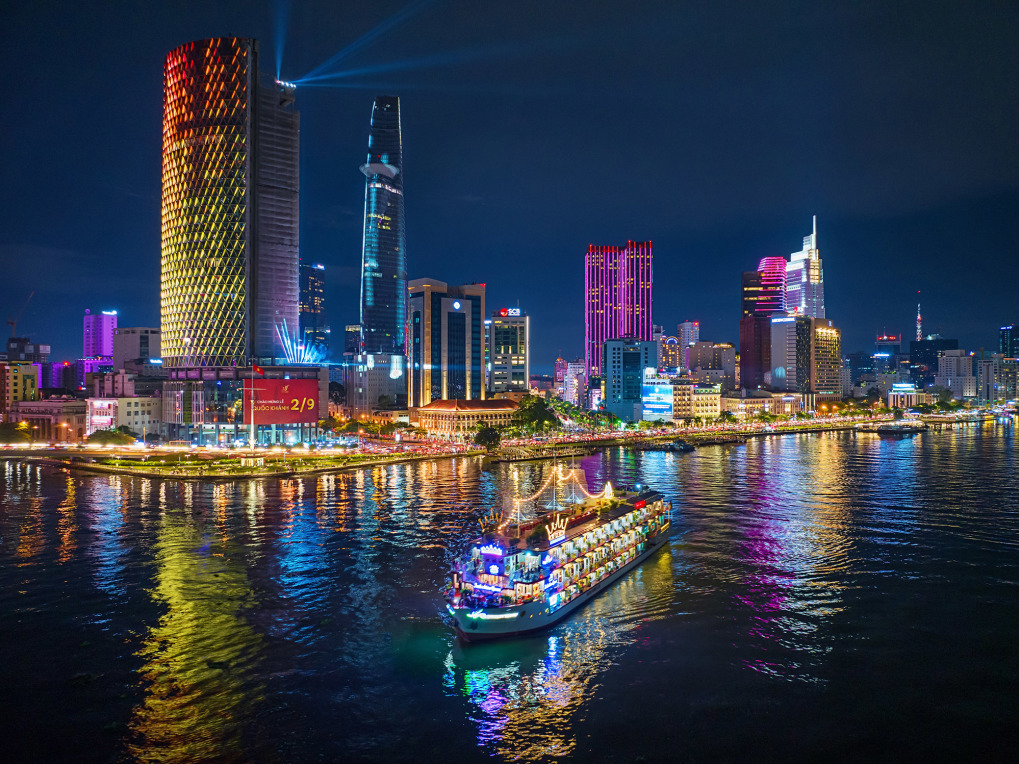
- On 06/08/2023
- In Blogs Travel Tips
- Tags:
Saigon-Ho Chi Minh City
Sources: Bích Phương – Tâm Anh | VnExpress
Other sources: HCMC Tourism, CNN Travel and Wikipedia, Vietnam Is Awesome, Saigoneer
Vietnam's largest, fastest city–Ho Chi Minh City has charmed visitors for decades with its old school atmosphere. It's still got that, but it's also the biggest and fastest growing city in Vietnam, with much to offer visitors (as CNN Travel)
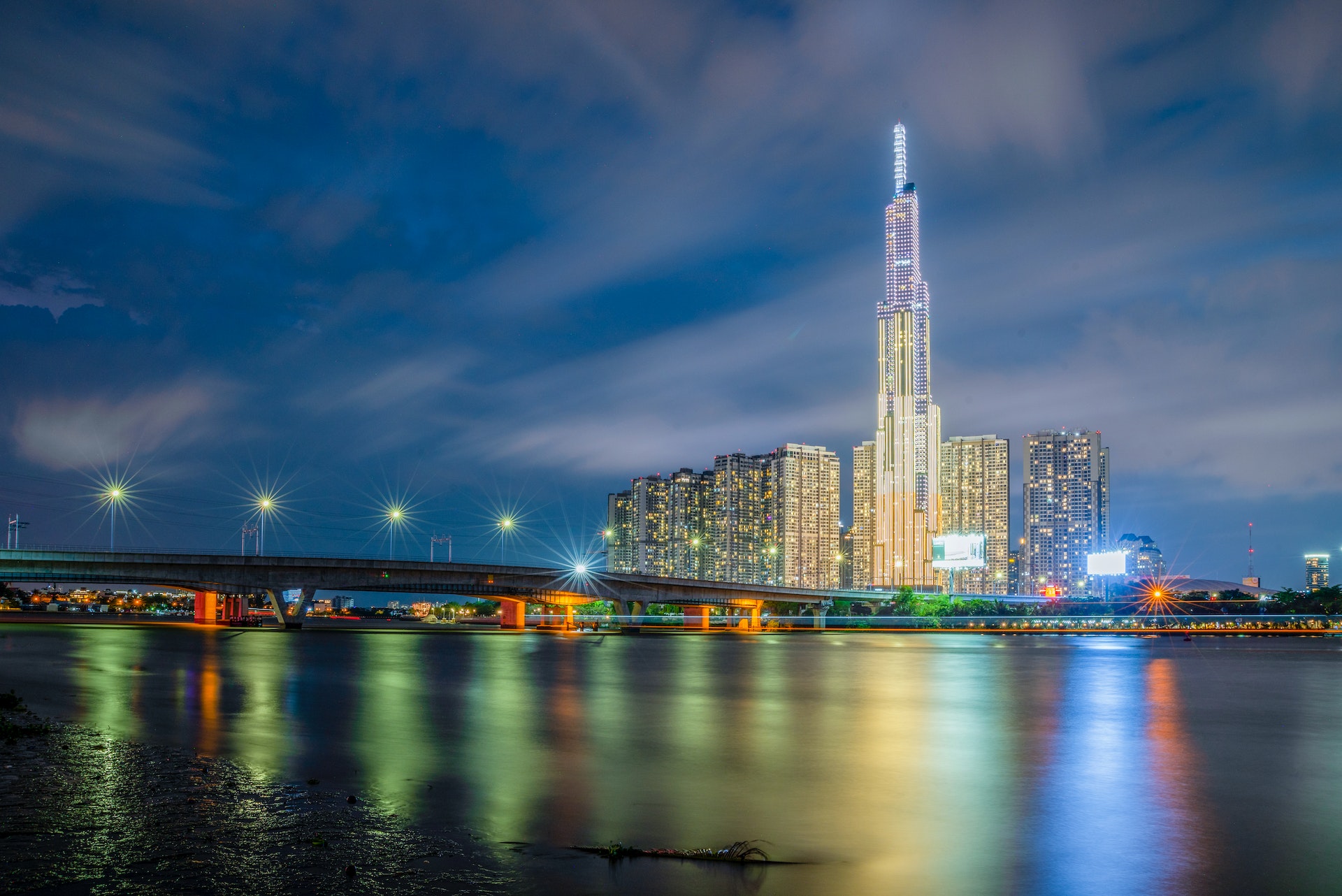
Best month to visit Saigon?
The best time to visit is between December and March when the weather is most settled. The hottest month of the year is April with an average daily maximum of 35°C and an average low of 27°C. The coolest month of the year is December with an average daily maximum of 32°C and an average low of 24°C.
Hanoi is colder than Saigon. They have similar temperatures in the wet season, but Hanoi is up to an average of 10°C (18°F) cooler in its winter (Vietnam's dry season). In January, the temperature range in Hanoi is 14–20°C (57–68°F), while in Ho Chi Minh it is around 21–33°C (70–91°F). The monsoon season, with an average rainfall of about 1800mm annually (about 150 rainy days per year), usually starts in May and ends in late November. During this period, although it will rain heavily almost every afternoon, the rain is short and clear quickly. Summer lasts from May to October when it is hot and humid and the region experiences its highest rainfall. July to September are often the wettest months of the year.
How To Get To Ho Chi Minh city
Ho Chi Minh City, or Saigon as it’s known by many, is a very busy and vibrant city located in the tropical South of Vietnam. With the population quickly approaching 8 million people, and with haphazard planning adding more and more motorbikes to the mix each day: traffic can become a nightmare at times! But don’t worry – there are plenty of ways to get around this amazing city.
Getting to Saigon by Plane: Tan Son Nhat international airport allows fairly easy and cheap air travel to Saigon. The airport is very modern and offers great facilities duty-free shopping, restaurants, duty-free international shopping stores, high-quality airport food stalls, etc.
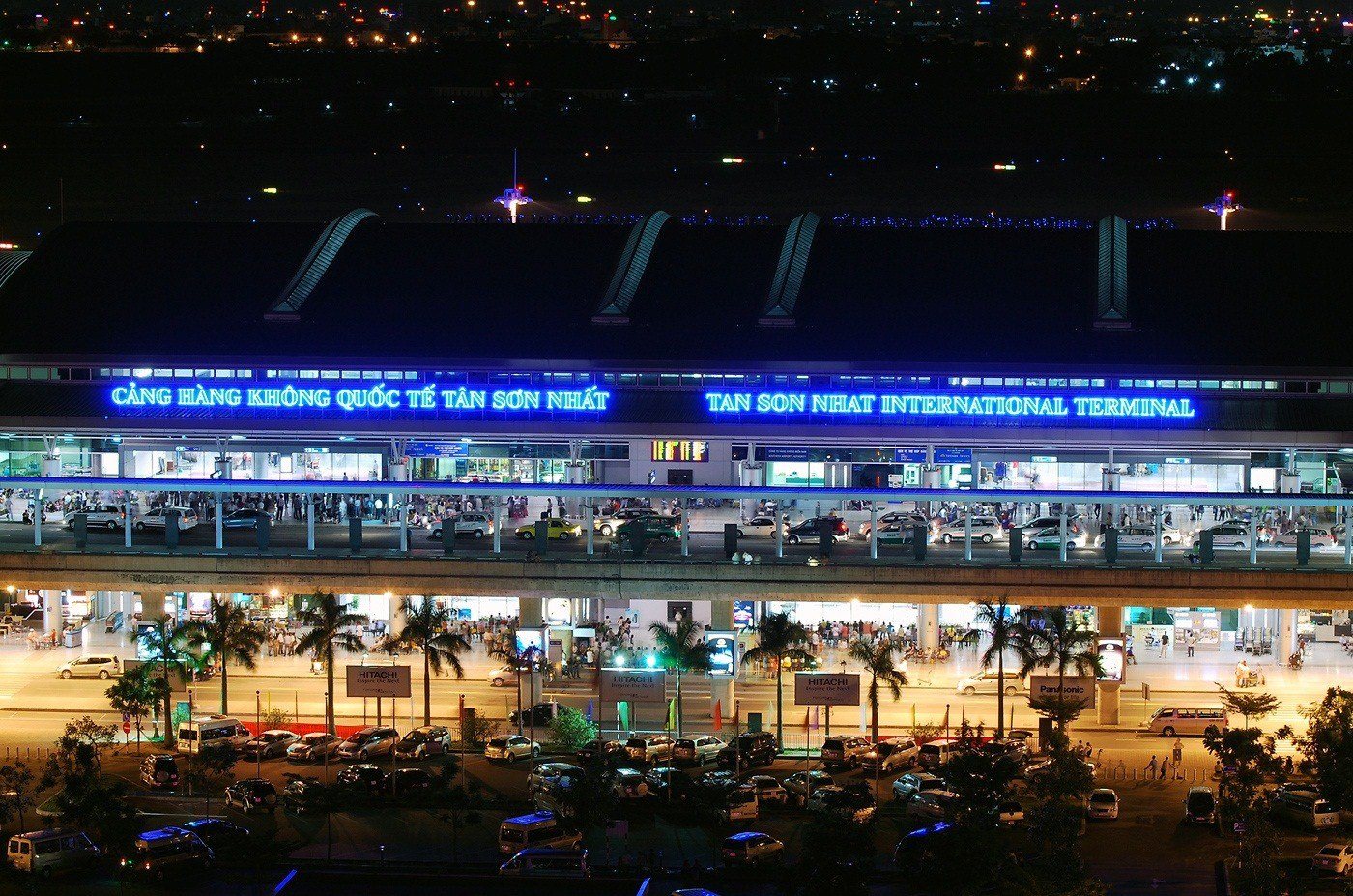
Tan Son Nhat International Airport (IATA: SGN; ICAO: VVTS) is the main and the busiest international airport in Vietnam serving Ho Chi Minh city and the southeast area of the country. SGN Airport is located 7 km from Ho Chi Minh city, in Tan Binh District. The busiest routes from Tan Son Nhat Airport are Hanoi, Da Nang, Hai Phong, Khanh Hoa, Hue, Singapore, Bangkok, Phu Quoc, Nha Trang and Seoul.
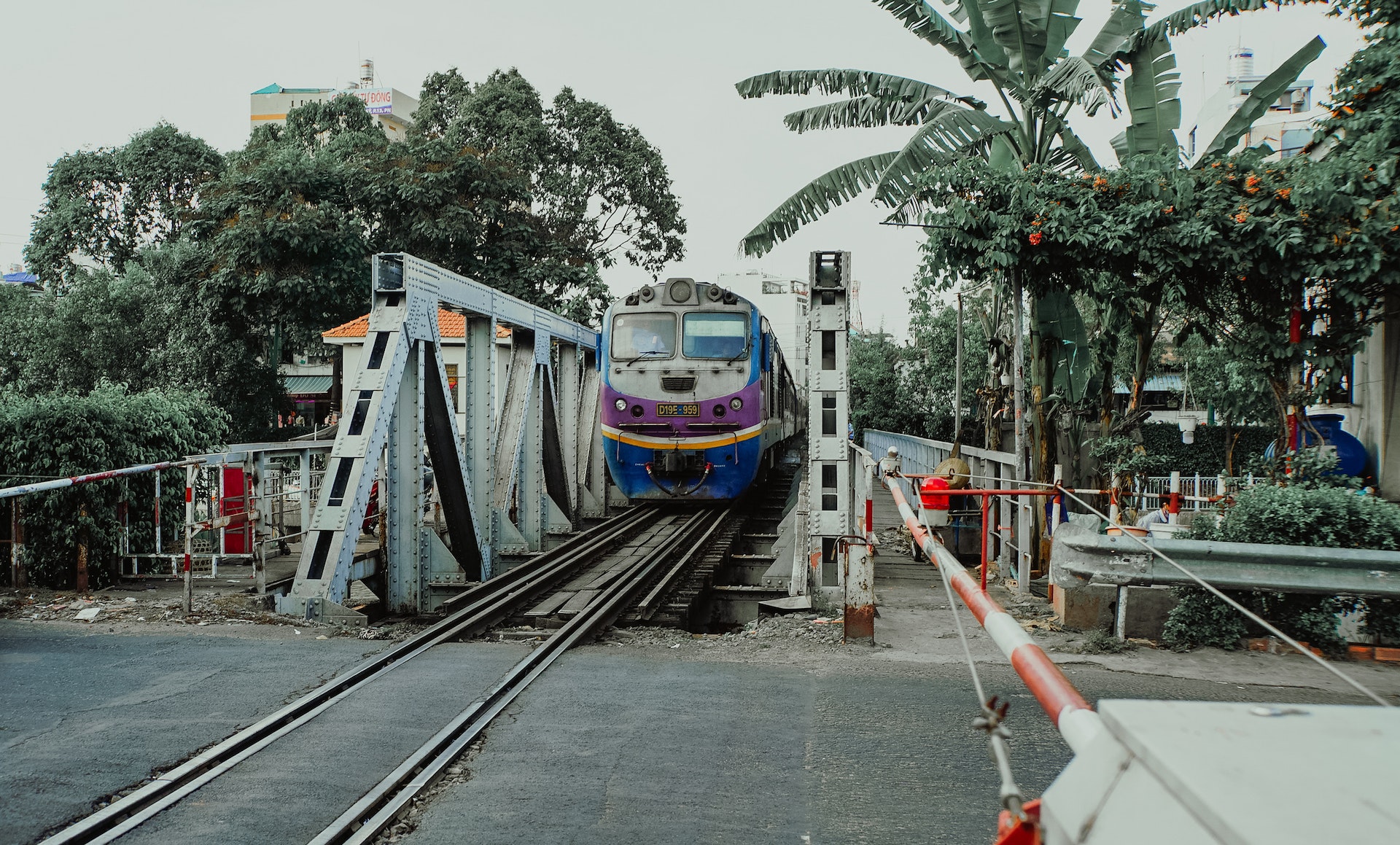
Train travel can be used to arrive in Ho Chi Minh City from major cities such as Hanoi. Vietnamese trains are generally reliable and comfortable and are great for long distances when you’re more focused on the experience than getting somewhere quickly. Rice fields, palm trees, water buffalo, Vietnamese towns and villages… You get a real insight into Vietnam when you travel by train, both urban and rural, which you don’t get from 35,000 feet. And if you’re good at people watching you’ll get insights on board the train too.
The North–South Railway, Chemin de fer Nord-Sud is the principal railway line serving the country of Vietnam. It is a single-track metre gauge line connecting the capital Hanoi in the north to Ho Chi Minh City in the south, for a total length of 1,726 km (1,072 miles). Trains travelling this line are sometimes referred to as the Reunification Express, although no particular train carries this name officially.
Getting Around Saigon
There is no best way to get around Ho Chi Minh City. The city has an extensive and efficient public transportation system, but it’s also easy to find taxis if you prefer not to use the bus. Now, we’ll give you an overview of the different ways to get around Saigon, as well as some tips on how to make your journey a bit easier.
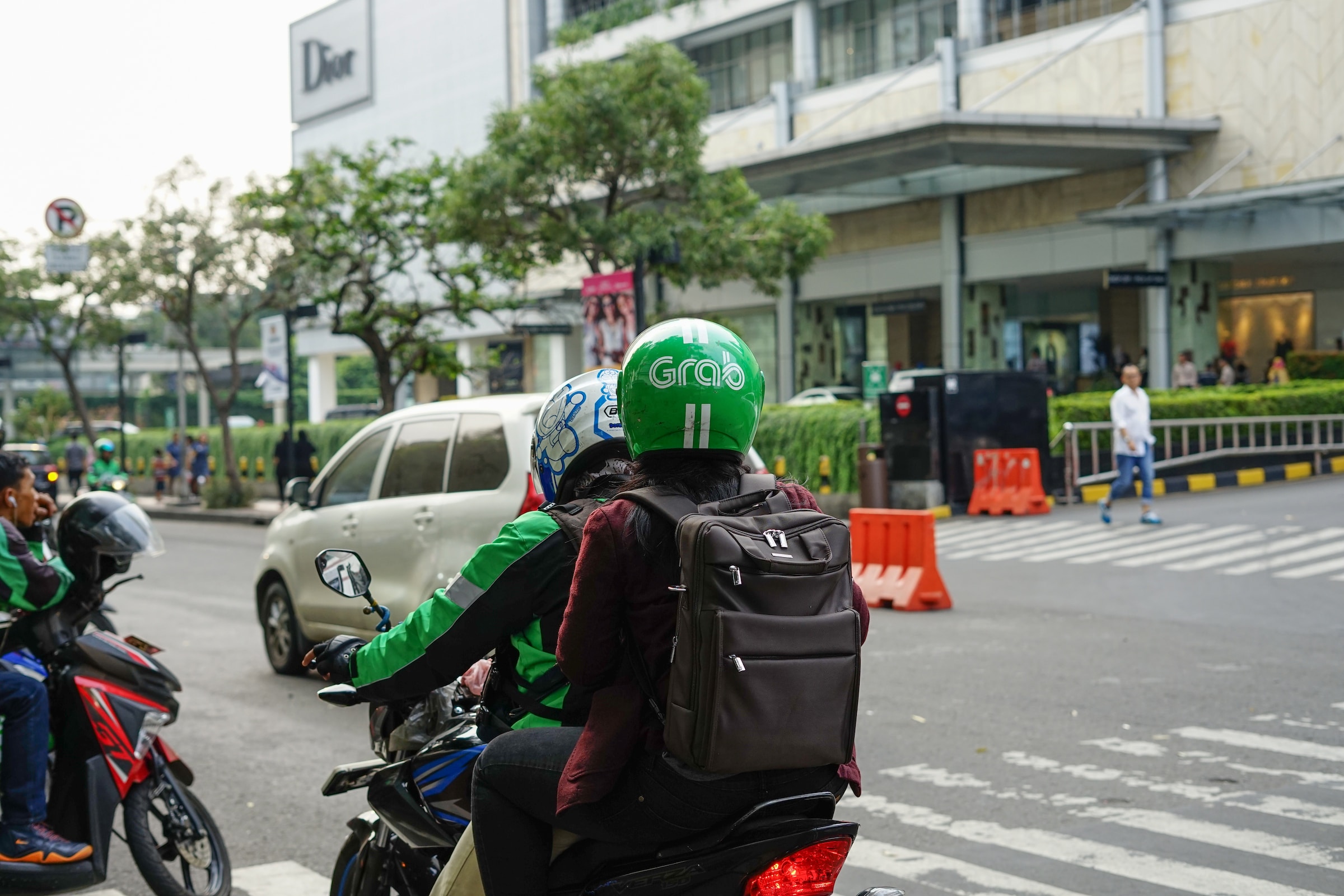
Grab Bike and Grab Car is a motorcycle taxi and private car booking service that uses modern technology to offer much better rates than traditional taxis, as well as food delivery services. These motorcycle taxis can be found everywhere, from Ben Thanh market to other areas. Gojek is an Indonesian-based company that has recently expanded into Vietnam to compete with Grab. It is a motorbike taxi service but also offers other services such as food delivery.
The most common Vietnam transportation is xe máy – scooters, as anyone visiting the city would undoubtedly notice. Recent statistics show that there are approximately 9 million scooters in Saigon. It is the quickest and most affordable method to travel throughout the city.
RentABike is a family-run business that specialises in long-term rentals to expats living in Hanoi, Da Nang, and Ho Chi Minh City. They provide a variety of automatic and semi-automatic Yamaha and Honda scooters in the 100cc-135cc range, with the most affordable costing VND 150,000 per day for driving around town. The average price of a long-term rental in Saigon is between VND 900,000 and VND 1,700,000 per month if you intend on staying in and around the city (they also have branches in Da Nang and Hanoi). [vietnamisawesome.com]
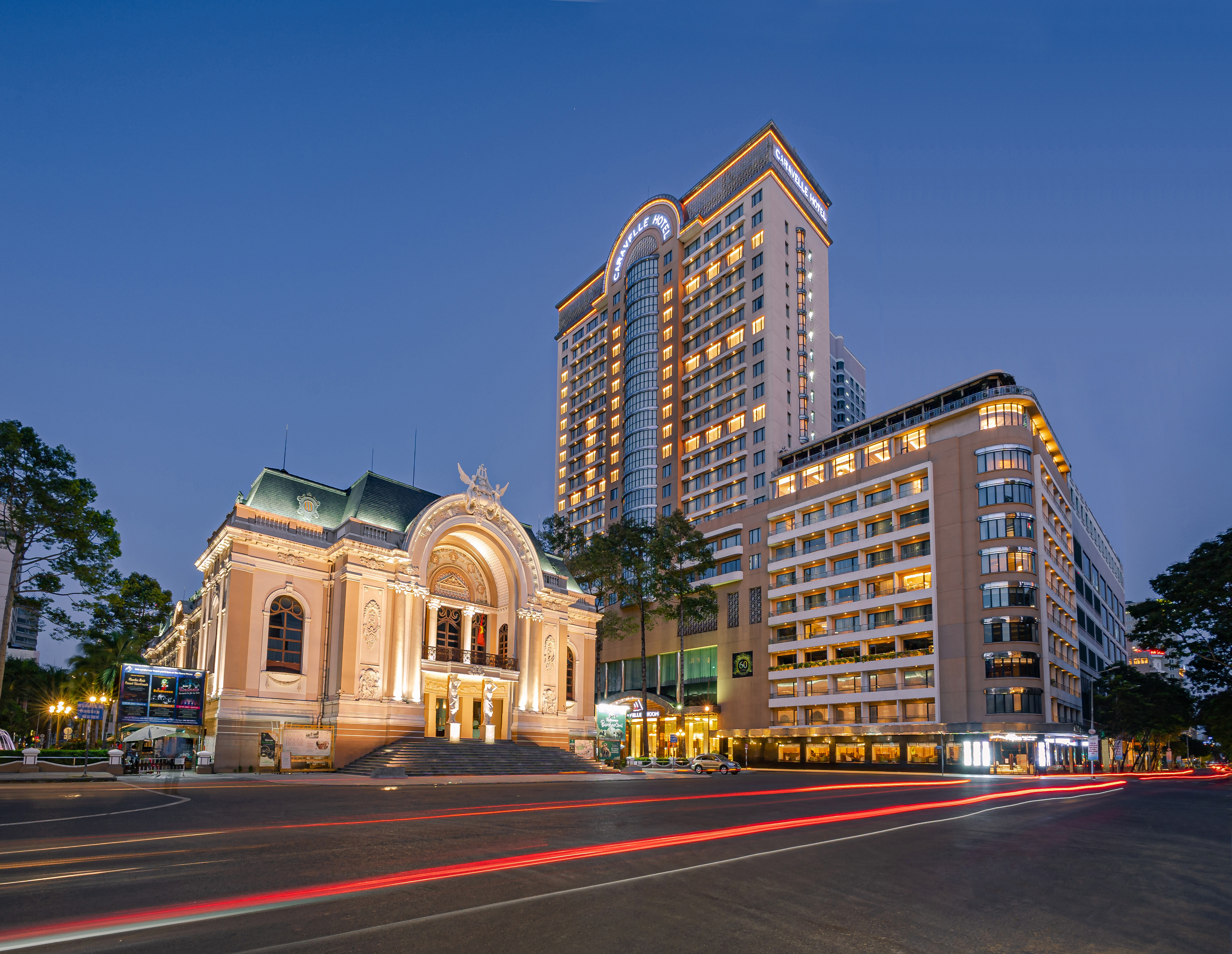
Where to Stay?
Accommodation services in Ho Chi Minh City are diverse with a system of hotels, homestays, serviced apartments, meeting the needs of visitors. It is possible to find rooms with prices ranging from a few hundred thousand to tens of millions of Vietnamese Dong per night.
The five-star hotels and international brands, such us Park Hyatt Saigon, Caravelle Saigon, Le Meridien Saigon, New World Saigon Hotel, Renaissance Riverside Hotel Saigon, InterContinental Saigon Hotel, Mia Saigon Luxury Boutique Hotel, Mai House Saigon Hotel, Sheraton Hotel Saigon, The Reverie, Hotel Majestic Saigon, Hôtel des Arts Saigon, Pullman Saigon Centre, Hotel Nikko Saigon, La Vela Saigon…
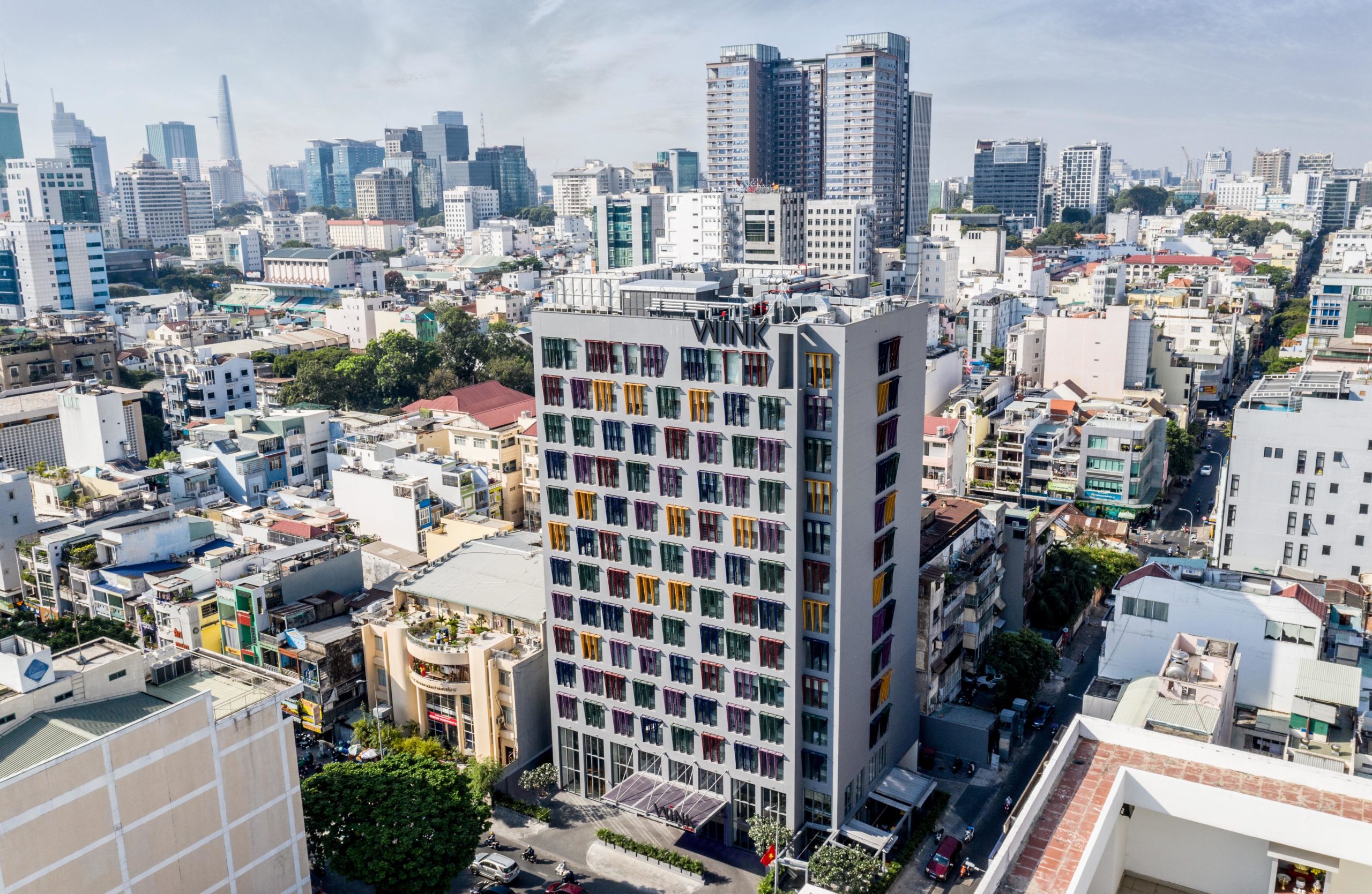
In the mid-range segment from one to two million dong, visitors can refer to hotels such as Wink Hotel Saigon Centre, La Memoria Hotel, The Hammock Hotel Ben Thanh, Millennium Boutique Hotel, The Odys Boutique Hotel….
Serviced apartments with full amenities like regular apartments but beautifully decorated to suit travel needs. Some addresses visitors can refer to include Ariosa, The Bloom, City Oasis, S Home, M Village Boutique. Serviced apartments are priced from VND 800,000 to VND 2,000,000.
Homestay has a price of less than 1 million VND per room. Some homestay addresses in the center include Nap Saigon, Home, Hostie Saigon Wanderlust Home, Cactusland Homestay, Zooz Studio.
In addition, there are many other budget motels. Guests can refer to booking at: Thiên Xuân Travel, Agoda or Booking.com
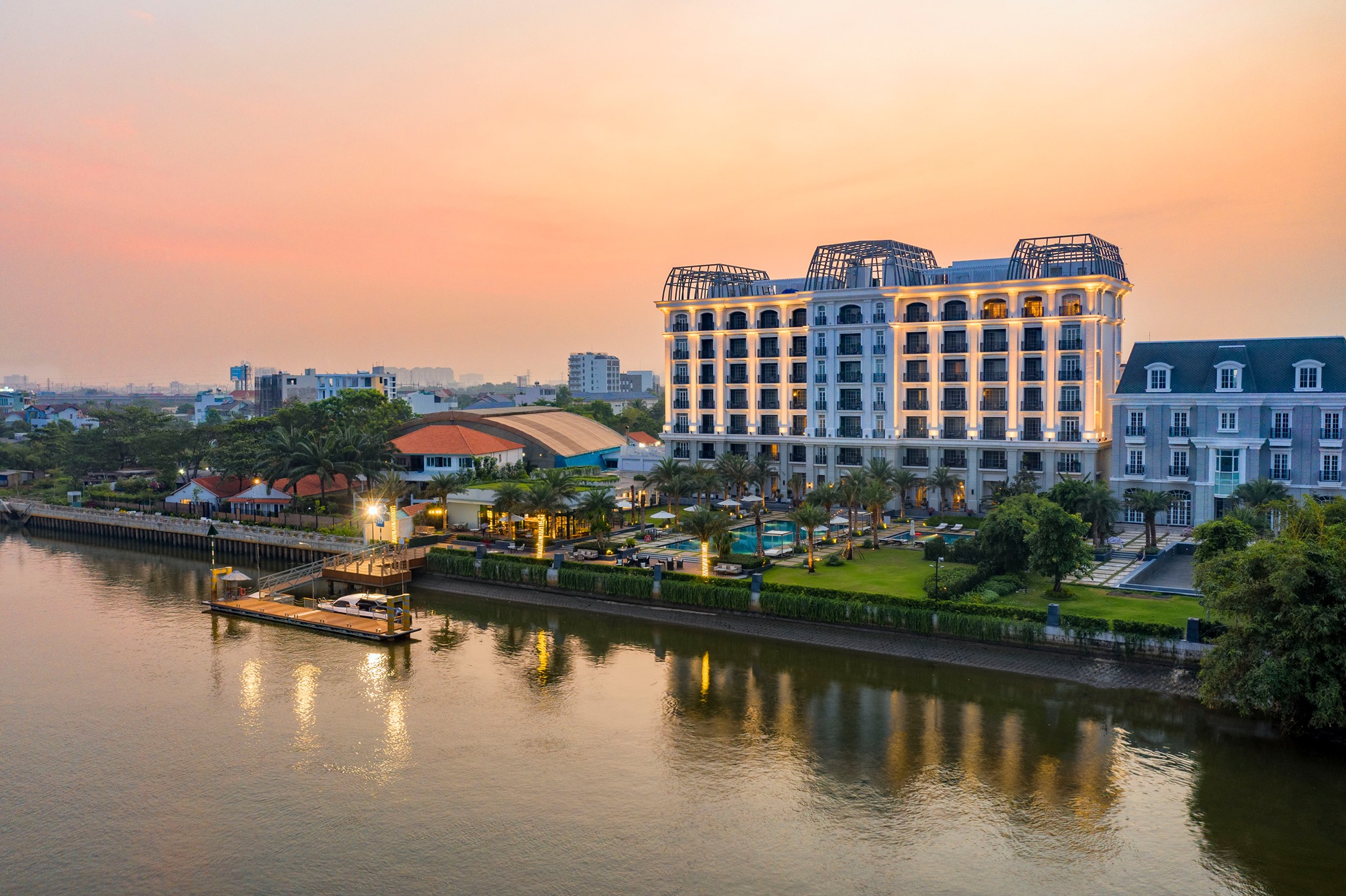
Ho Chi Minh City Entertainment
Ho Chi Minh City tourism orients each district to have a unique tourism product. The city converges a variety of entertainment activities, amusement parks, sightseeing, shopping suitable for many customers.
River Bus

River experiences are a feature of tourism in Ho Chi Minh City. Visitors can see the city from a different perspective, through many famous landmarks such as Nha Rong Wharf, Ben Nghe Port, Phu My Bridge, Den Do Cape, Binh Khanh Ferry Terminal...
River buses depart daily from 8:30 am at Bach Dang, Binh An, Linh Dong, Thanh Da, and Hiep Binh Chanh wharfs. The night bus departs at 22:00 at the latest. Tickets can be booked online or bought directly at the wharf for 15,000 VND a time.
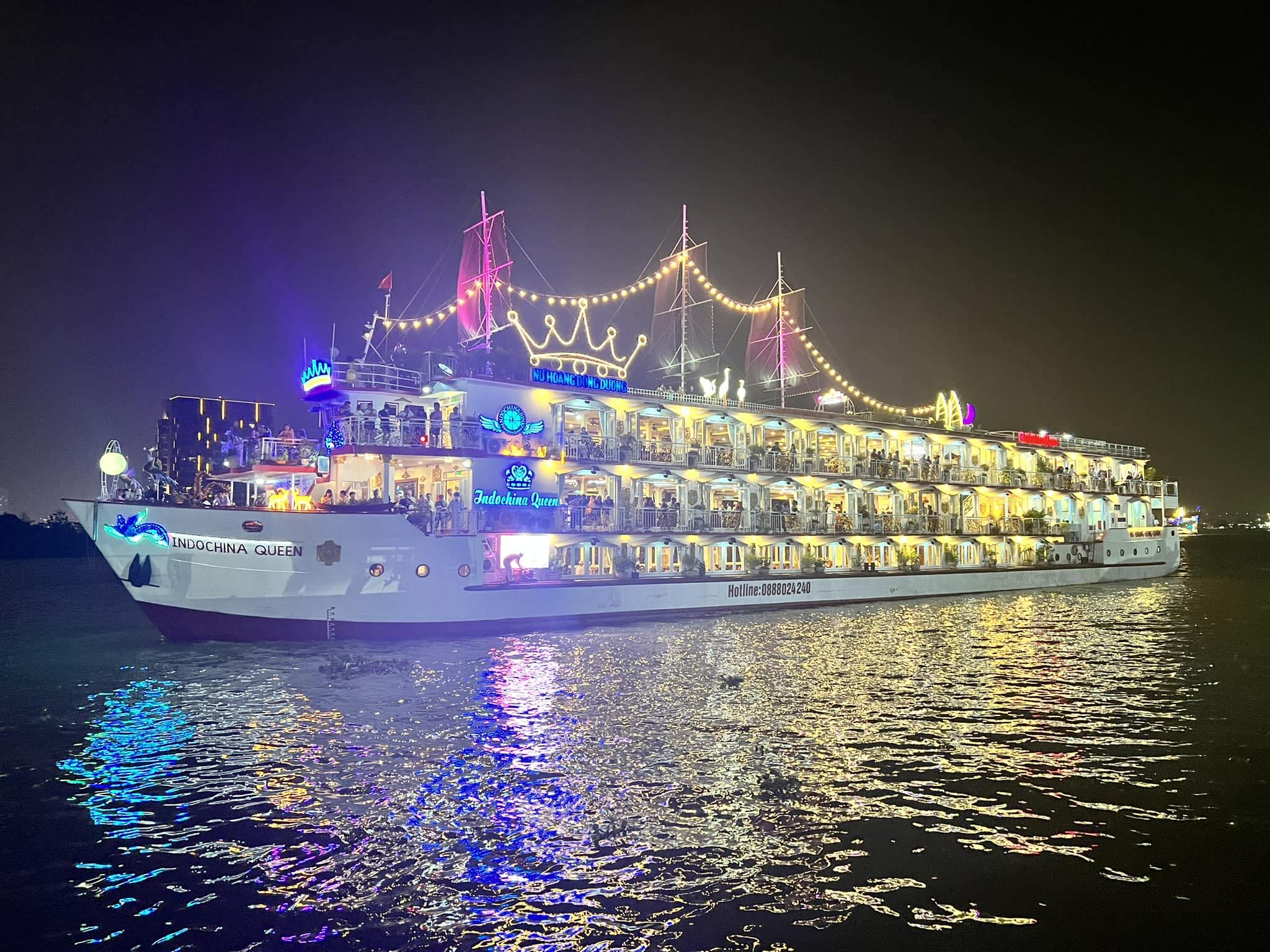
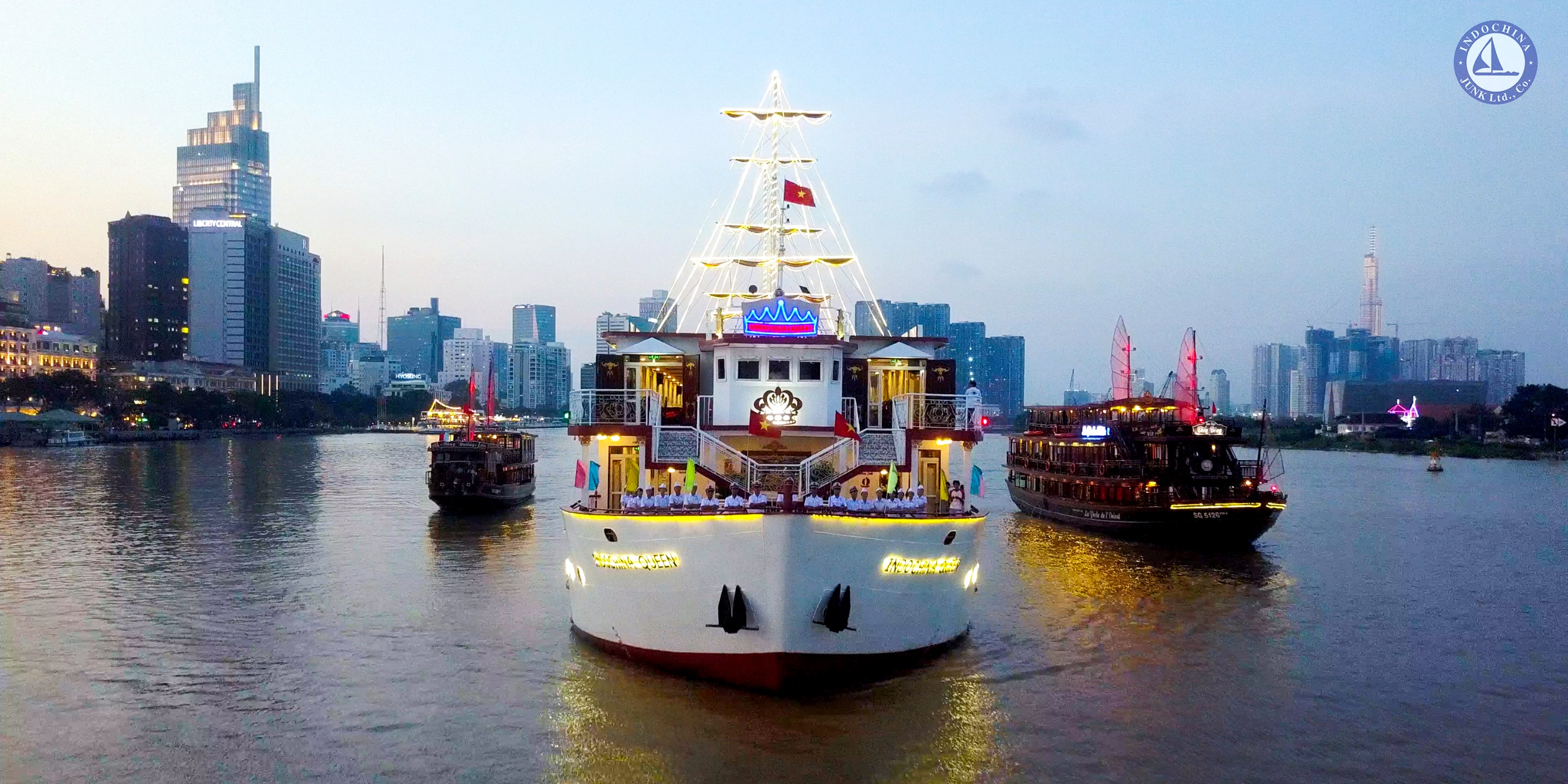
Saigon River Dinner Cruise
The cruise departs every evening from Saigon port, taking visitors along the river, watching the beauty of Nha Rong wharf, Ben Nghe port, Saigon bridge, Landmark 81 building… Guests can experience dinner on board. yacht, enjoy the beautiful scenery along the river, with ticket prices from 350,000 VND to more than one million VND, depending on the type of yacht. Asian-European style buffet or combo. The cruise also has art programs, music performances, magic shows.
Ho Chi Minh City at night, especially along the city’s spectacular river, is a wonder to behold. For proof of this, look no further than one of some available dinner cruises. While you dine in traditional performance surroundings, you’ll get a true taste of just how much this city dazzles at night. This river cruise reflects the most beautiful side, relaxing and romantic with the bright lights of Saigon. In addition, visitors can include a small yacht, with a capacity of about 20 people, priced from 10 million to 25 million dong.
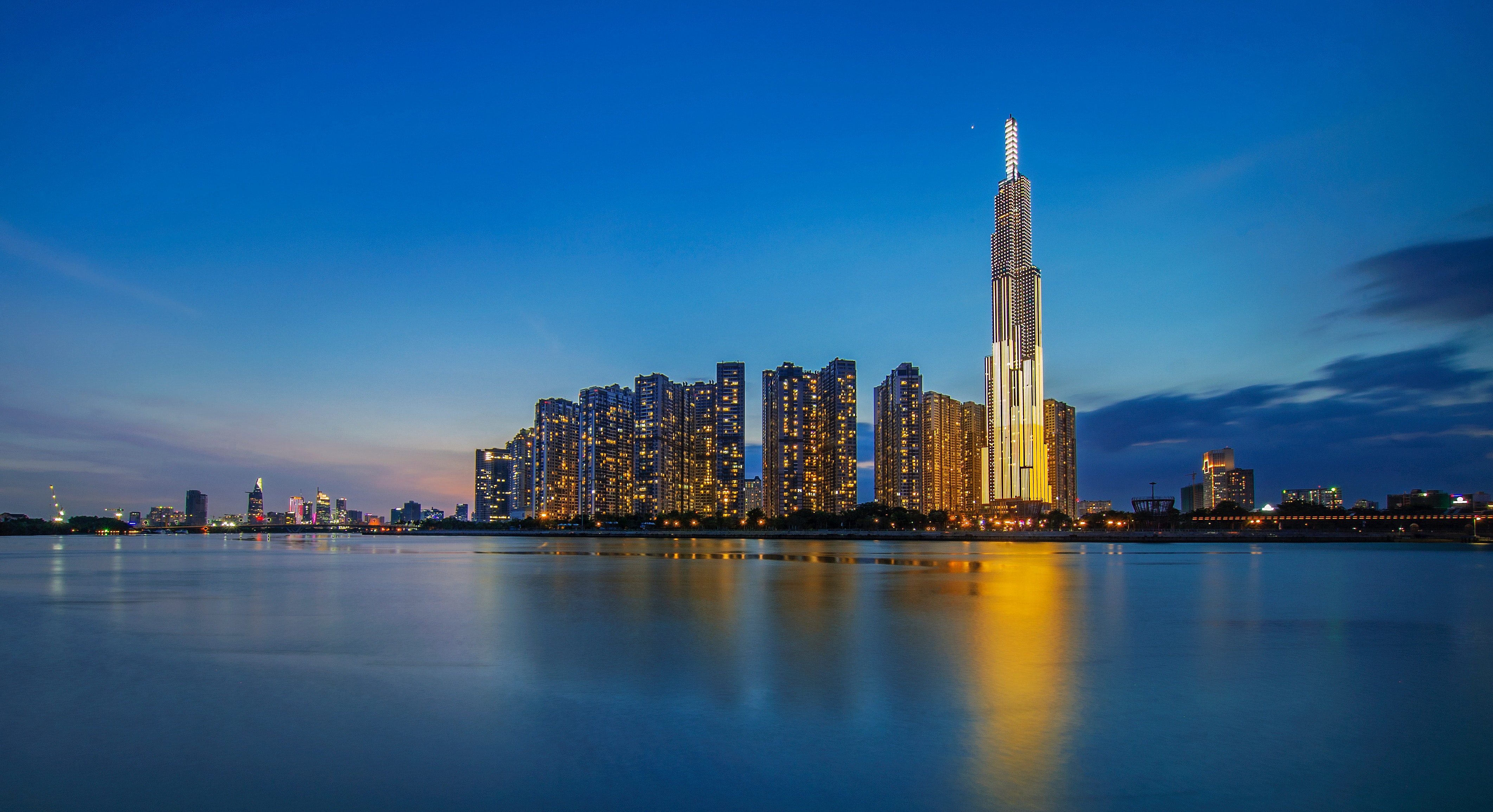

Ho Chi Minh City Hop On - Hop Off Bus
Chi Minh City tour Hop on – Hop off is a flexible and convenient tour which combines transportation and sightseeing many visitor highlights of Hanoi Capital by double-decker buses.You can get on and off the bus at any bus stop during daily the trip. Stay as long as you want at each sightseeing stop, then catch any of the Hop-On Hop-Off buses making the loop when you are ready to go. Ho Chi Minh City tour Hop on – Hop off has 13 stops going through more than 20 famous attractions, allowing travelers to explore and experience the city in their own way.

Bus arrives approximately every 30 minutes, from 9:00 to 22:30 daily. In the evening, the car provides an additional dinner service package on a luxury cruise along the Saigon River. Tickets can be purchased directly at the counter at the starting point 92-96 Nguyen Hue, District 1 or booked online.
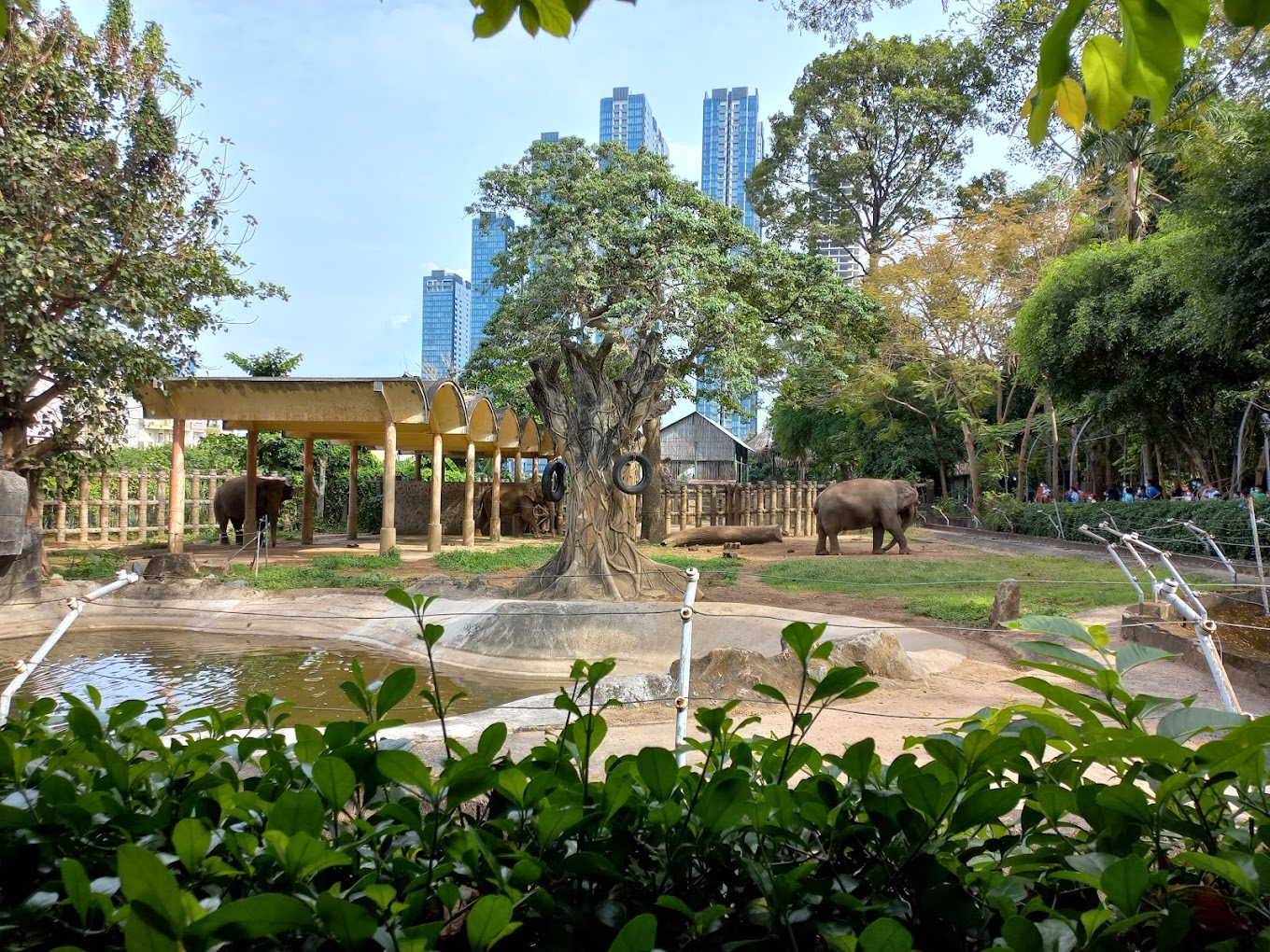
Walking in the Park
The Saigon Zoo and Botanical Gardens is Vietnam's largest zoo and botanical garden. The Saigon Zoo and Botanical Gardens was commissioned by Admiral Pierre-Paul de La Grandière in 1864, and was opened to the public in 1869, making it one of the world's oldest continuously operating zoos. The Saigon Zoo and Botanical Garden contains 590 animals of 125 species and 1,830 trees and plants of 260 species, some of which are over 100 years old. This includes 20 species of orchid, 32 species of cactus and 34 species of bonsai. The Saigon Zoo and Botanical Garden is divided into an animal conservation area, a plant conservation area, an orchid garden and an amusement park.
In addition, Ho Chi Minh City has many beautiful parks and green spaces such as Tao Dan, Hoang Van Thu, Le Van Tam, Gia Dinh.

Live Entertainment Nightly
Sipping a cup of coffee or a glass of wine and enjoying live music is one of the experiences in Ho Chi Minh City, especially in the evening. Live music venues have long attracted locals and tourists alike. In the evening, each place has its own music taste, from vibrant rock, to improvised jazz, soft acoustic or soulful love songs.
Some suggested addresses: Ben Thanh tea room, We, Khong Ten, Dong Dao. Acoustic bars or coffee shops: Yoko Cafe, Rock Fan Club, Sax N' Art Jazz Club, Acoustic Bar, Drinking & Healing, Sesame.
Bui Vien Walking Street

Bui Vien Street: Nightlife Heaven for the Youth in Saigon. Bui Vien Walking Street, a nightlife tourist attraction in Saigon, is an ideal venue for Western guests and young Saigonese to come to eat and hang out every time they go down the street. Bui Vien street is so-called “Western Street” (Pho Tay) referring to its Western culture-orientated features. Before becoming a walking city, Bui Vien street was crowded with backpackers coming here to have fun, try unfamiliar cuisines and explore a new place during their trip to Saigon.

Experience Chinatown

The Chinatown includes districts 5, 6 and 11, but the busiest and most known is District 5. Along the streets of Tran Hung Dao, Chau Van Liem, Luong Nhu Hoc... visitors will see the beautiful scenery. A row of ancient houses with bold Chinese architecture is about 100 years old. There are also many ancient temples, assembly halls, typical Chinese restaurants. Not-to-be-missed dishes include roasted duck, fried rice, curry fish balls, pulled noodles, hidden chicken, dimsum...
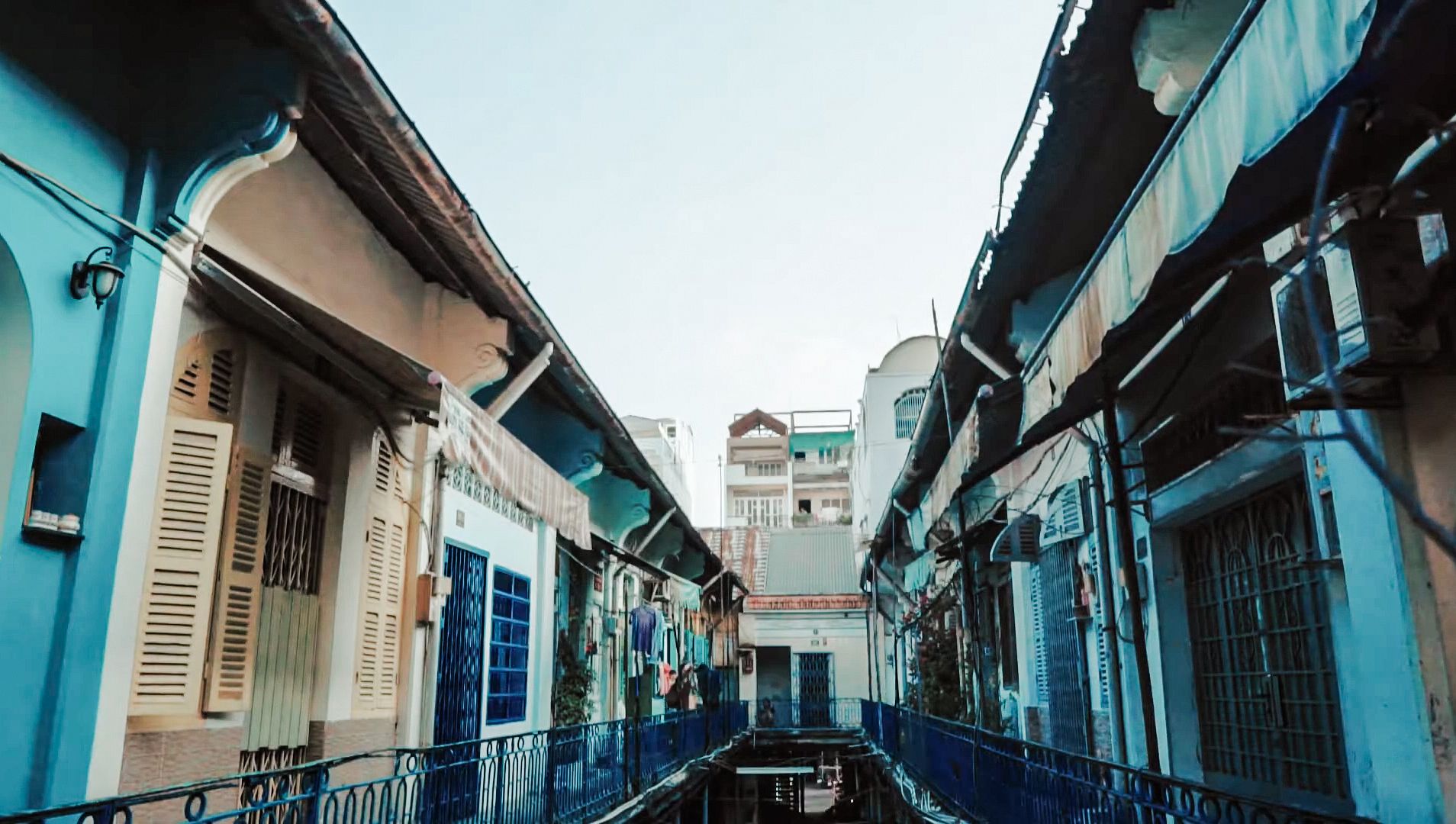
Hao Si Phuong is one of Saigon’s oldest alleys, built in the 1910s. Generations of Hoa Vietnamese have lived in the community’s two-story block for more than a century. In recent years, it has attracted the attention of locals and even foreign tourists thanks to the residential units’ unique Chinese architecture that has remained relatively untouched for decades. Couples have even picked the historic hẻm to be the background of their wedding albums.
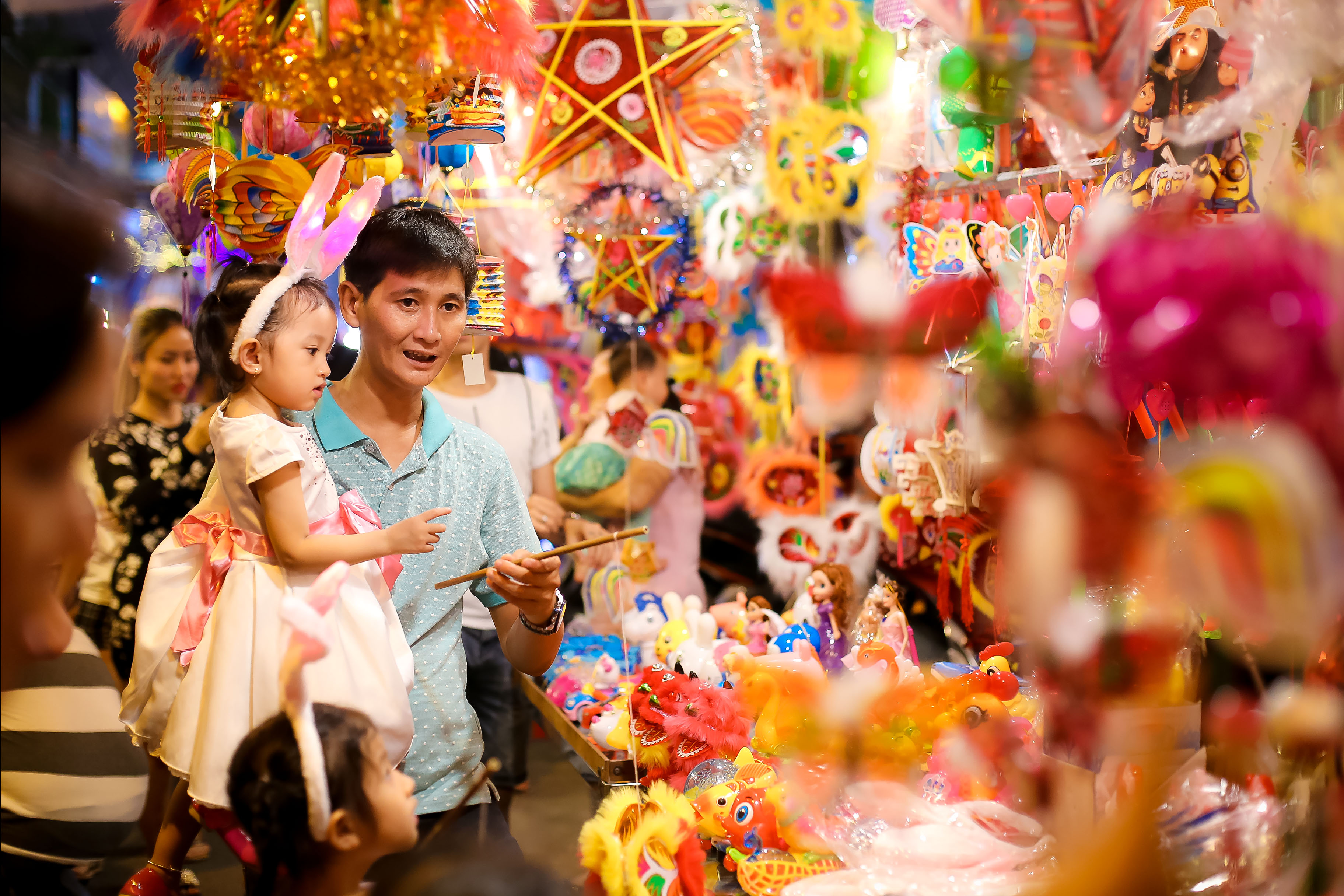
Lantern Street in Ho Chi Minh City, also known as Luong Nhu Hoc Lantern Street, is a vibrant and enchanting destination that comes alive during the Mid-Autumn Festival and other festive occasions. Located in District 5’s Chinatown, the street is adorned with numerous shops and stalls offering a dazzling array of lanterns and festive accessories. It provides you with a unique opportunity to immerse themselves in the rich cultural heritage of Vietnam, witness the vibrant colors of lantern displays, and capture memorable moments in this magical setting.
Historical Sites

Not only is a young and dynamic city, Ho Chi Minh City is also a place to keep many cultural and historical values. There are many monuments and museums in the city that are known to domestic and foreign tourists.
Reunification Palace
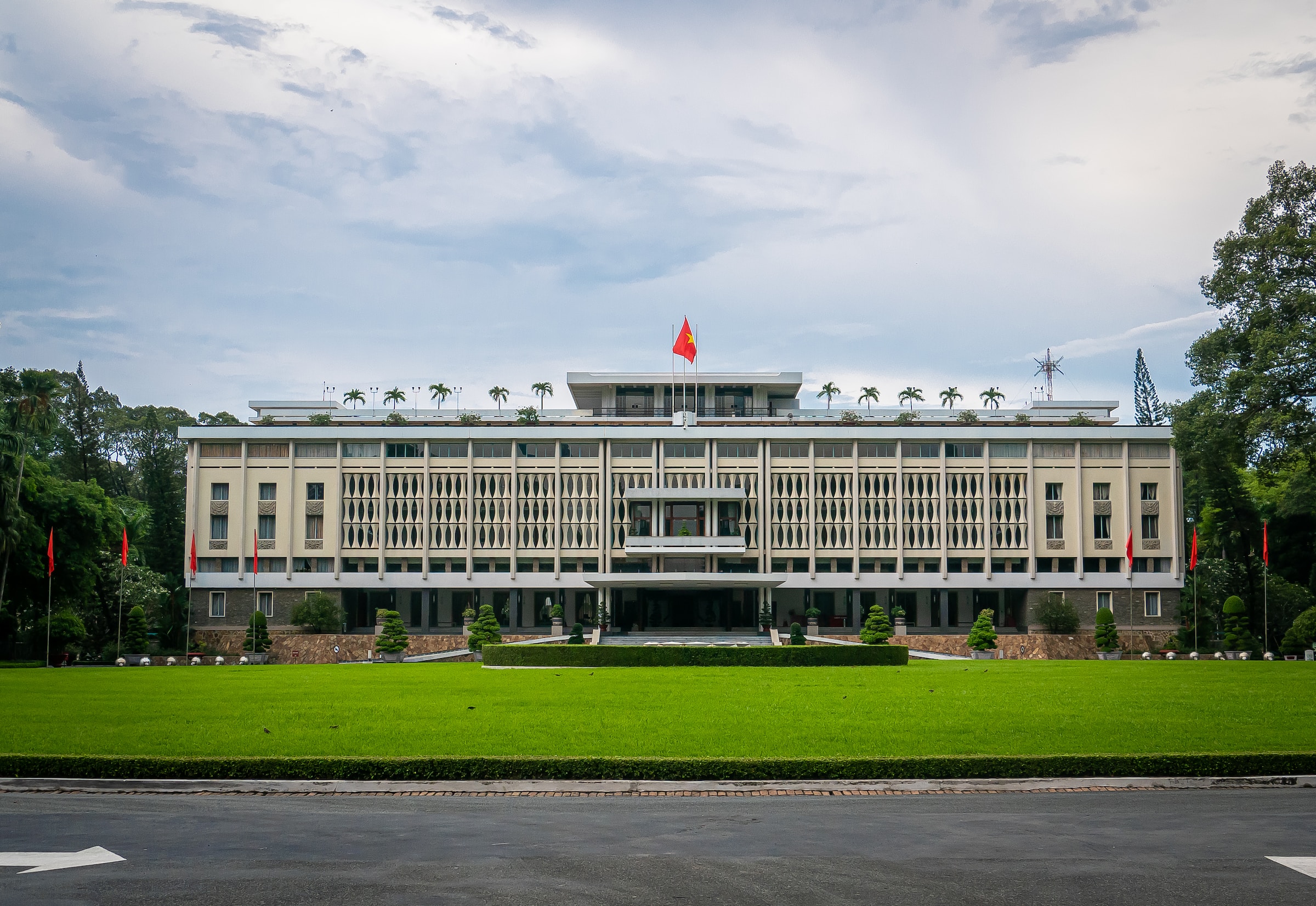
No building is more deeply entwined with Saigon’s dramatic history than the Reunification Palace. The former Presidential Palace, it was the site of bombings, attempted coups and the end of the Vietnam War on April 30 1975. Images of the National Liberation Force tanks crashing through the front gates are some of the most remembered of the twentieth century. The building is an outstanding example of Vietnamese modernist architecture, designed by French trained Vietnamese Ngo Viet Thu in the early 1960s.
Tickets to visit the Main Building and Gallery "From Norodom Palace to Independence Palace 1868 - 1966" cost from VND 15,000 to VND 65,000. If you only visit the main building, the ticket price is 10,000 to 40,000 VND.
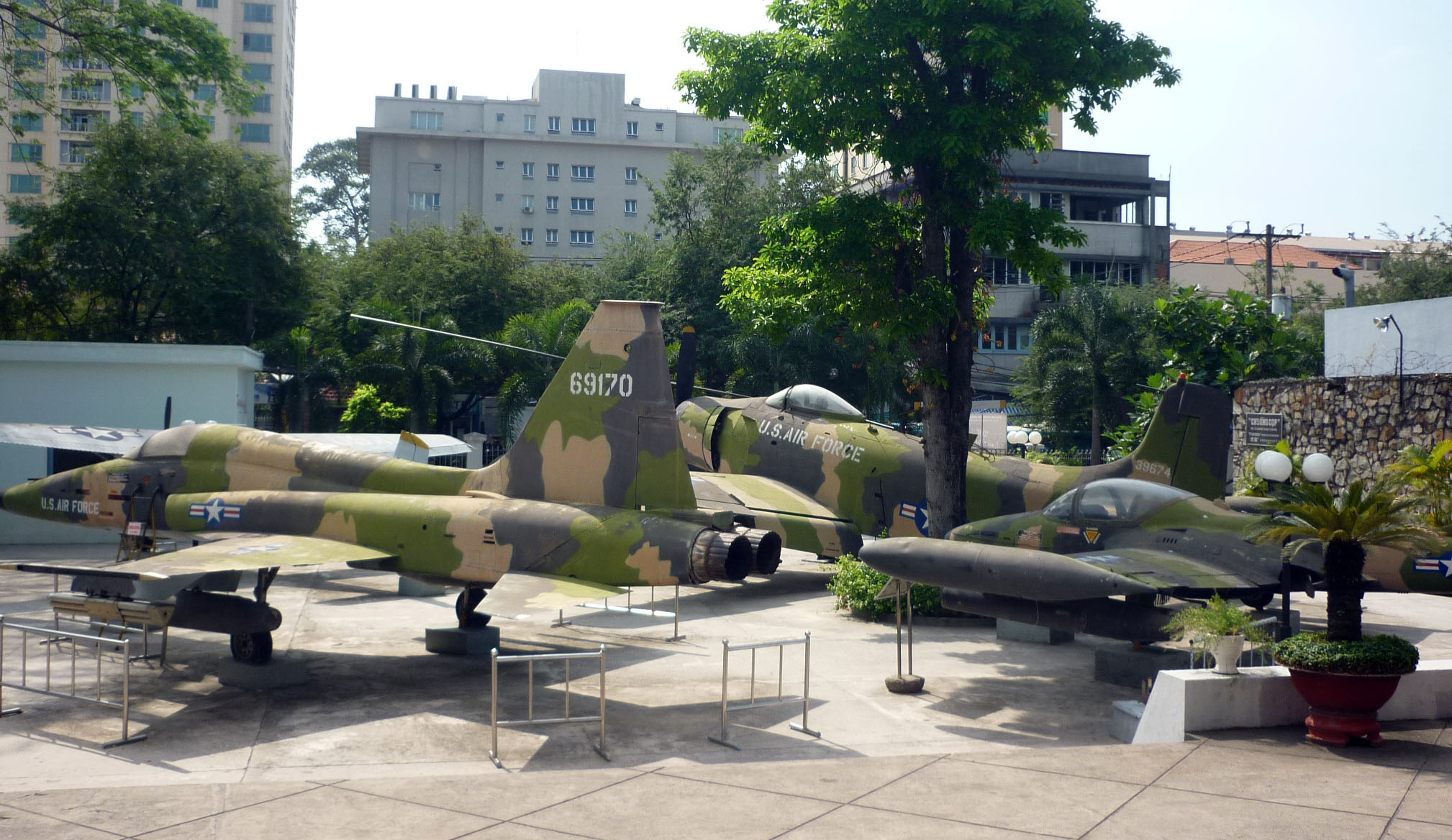
War Remnants Museum
Ho Chi Minh City’s most popular museum is a challenging experience. Once known as the Museum of American War Crimes, a change of name in the 1990s did not signal a softening of the tone. The museum tells the history of the Vietnam War from the view of the victor, and catalogues in images some of the atrocities committed against Vietnamese civilians. The Requiem photography exhibit, a special permanent display, is especially moving. It features images taken by photographers from both sides of battle, who were killed in action. US aircraft, tanks and other military hardware are on display in the museum grounds.
The museum comprises a series of themed rooms in several buildings, with period military equipment placed within a walled yard. The military equipment includes a UH-1 Huey helicopter, an F-5A fighter, a BLU-82 Daisy Cutter bomb, M48 Patton tank, an A-1 Skyraider attack bomber, and an A-37 Dragonfly attack bomber...
The Museum of «Biệt động Sài Gòn»
Retracing Biệt Động Sài Gòn Hideouts, Where Grenades Were Just Below Your Feet
Biệt động Sài Gòn, an insurgent group that carried out raids and sabotage missions, was founded during the war against the French and experienced a revival in the early 1960s to undermine the control and effectiveness of the American troops and their allies in Saigon. Their story was immortalized in the movie Biệt động Sài Gòn, with Trần Văn Lai serving as the inspiration for the film’s charismatic owner of Đông Á Paint. In real life, he was an important figure in the group, and a few of the homes he owned in the city reveal his commitment to the cause.
The tube house, built in 1963, has been transformed into a coffee shop in recent years, but the ornate iron French elevator with manual doors and locks that one enters upon arrival announces that the building is more than just another fabricated retro cafe peddling trendy nostalgia and plant-filled balconies. Lai’s living relatives have turned it into a museum dedicated to Biệt động Sài Gòn and amongst the artifacts on display are the tools that he used for a career that served as camouflage so he could move in and out of the government stronghold unsuspected.
A set of leather couches on the ground floor are the same type that he once hid weapons inside. Various items including military radios, a typewriter once owned by Nguyễn Văn Thiệu, an accordion and motorbikes relied upon to transport secret messages have since been added as further touches of the time period and the revolutionary spirit of the home’s occupants. [saigoneer.com]
Visiting hours are from 7:00 to 22:00 on weekdays. Free admission.
Museum Of Vietnamese History

If Vietnam’s dramatic twentieth century history is weighing you down, a visit to the Museum of Vietnamese History might be just the tonic. Set in Saigon Zoo and Botanical Gardens, this is a good escape from the bustle of the city, and the Vietnam War emphasis of other popular museums. The collection focuses on southern Vietnam’s pre-twentieth century history. There are exhibits from the Cham and Oc Eo kingdoms - the original inhabitants of the Ho Chi Minh City and Mekong Delta - as well as the Nguyen Dynasty. The building is another highlight. By the 1920s, colonial architecture was evolving to include local design elements. This museum is an excellent example of what is known as the Indochine style, fusing European and Asian architectural influences.
Visiting time: from 08:00 to 11:30, afternoon from 13:00 to 17:00. Entrance fee: 30,000 VND one time.
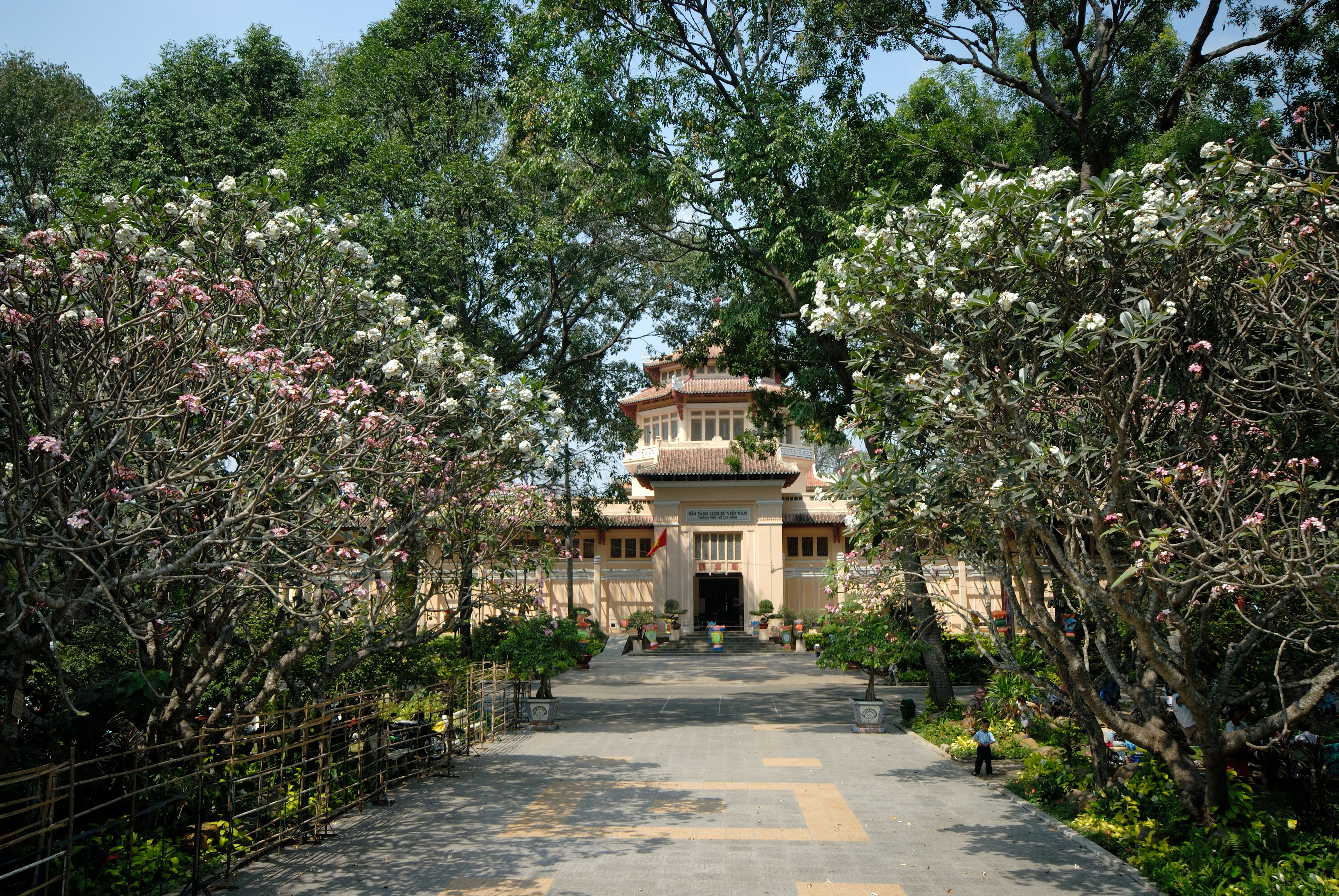
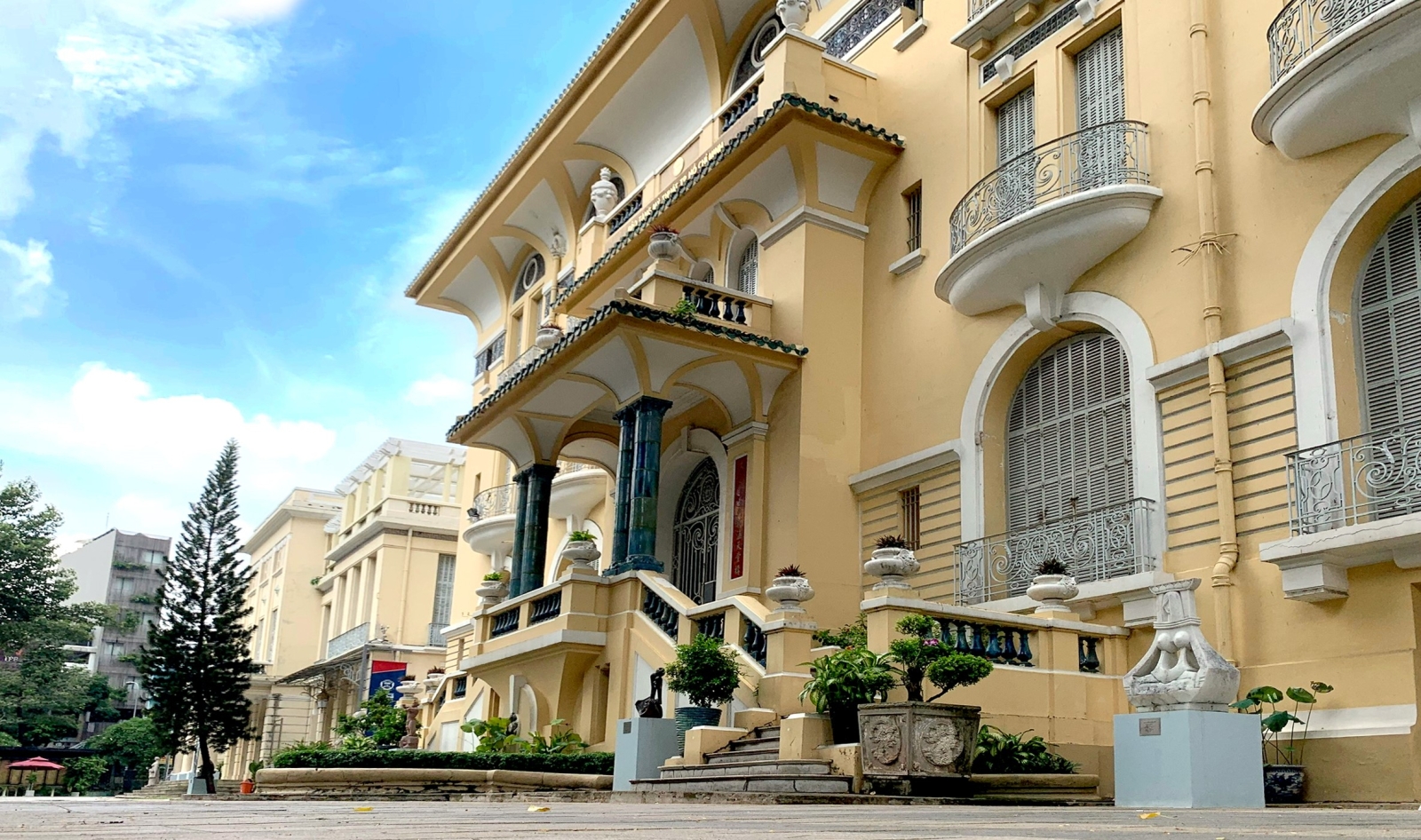
Fine Arts Museum
The best place to explore Saigon’s modern art story is also one of the city’s most spectacular colonial-era buildings. The Fine Arts Museum was formerly owned by the Chinese Hui Bon Hoa family - one of the wealthiest families in the city before the end of the Vietnam War in 1975. There are some wonderful pieces on display here in a dramatic art space. The collection ranges from contemporary painting, to lacquer, works from wartime artists, and ancient pieces from the Cham and Oc Eo civilisations in a newly opened wing.
In particular, this was the first construction in Saigon bringing elevators into the design. At that time, the elevator was decorated like an ancient Chinese palanquin. Another Chinese feature of the museum is the red tiled rooftop which was in the Yin and Yang style. The windows are fitted with colorful glass windows with the typical style of European art. All the details make the architecture construction an outside artwork with typical salient features of East Asia and France.
Visiting hours: from 08:00 to 17:00 on weekdays.

Colonial Heritage Sites in Saigon
Saigon Central Post Office
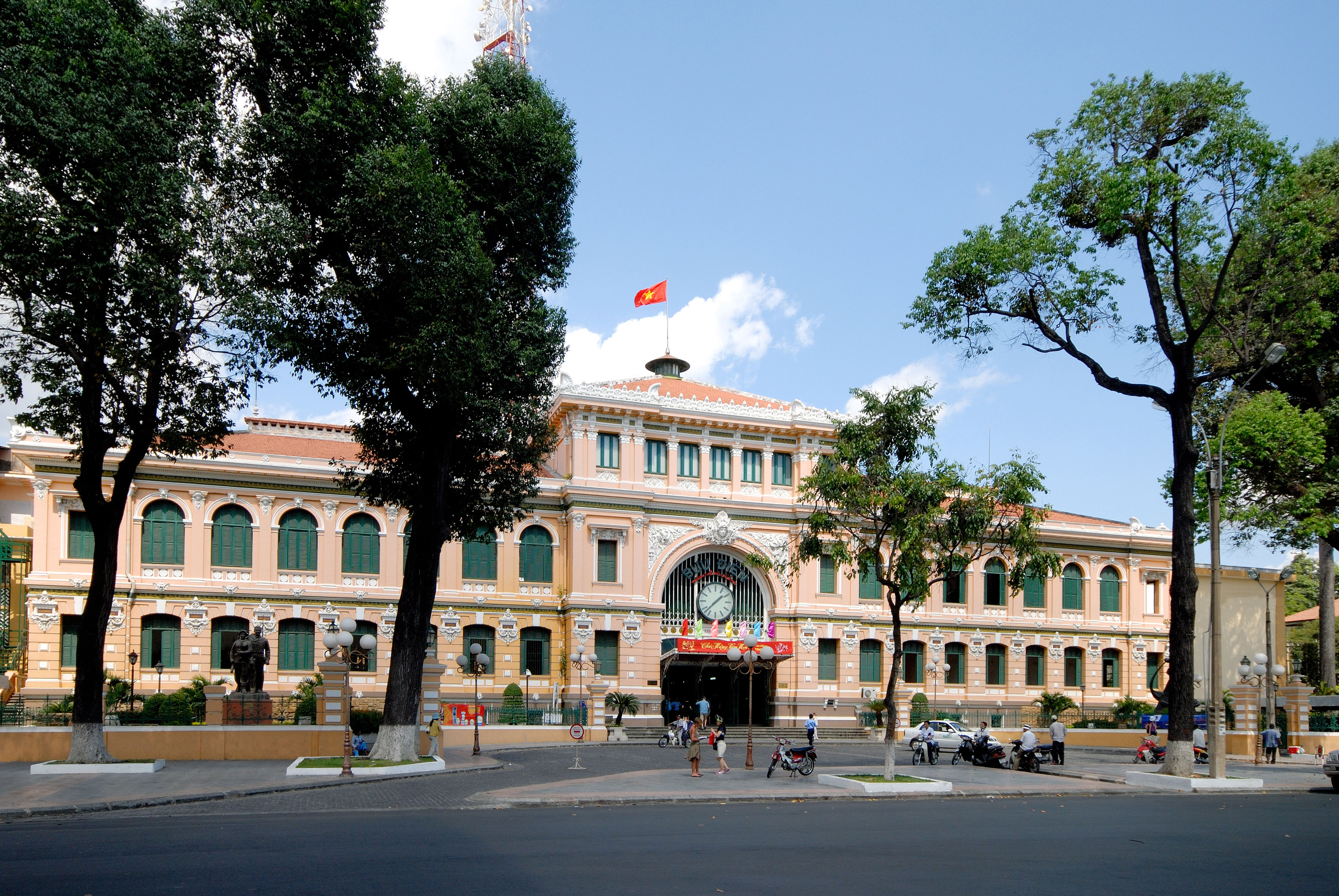
Located in Paris Square, District 1, the City Post Office was built between 1886 and 1891. The work was designed by two French architects Alfred Foulhoux and Henri Auguste Vildieu. After more than 100 years of existence, this is currently the largest post office in Vietnam, still keeping the original design. The arched ceiling, in the middle is embossed with a portrait of Mercury with a laurel wreath surrounding it, a deity symbolizing human communication. The post office is reminiscent of the Orsay train station in Paris, located in parallel with Notre Dame Cathedral to form a special architectural cluster of the city.
Visiting times: 7:00 to 19:00 (Monday to Friday), 7:00 to 18:00 (Saturday) and 8:00 to 18:00 (Sunday).
Saigon Opera House


An iconic Saigon building, and the immediate neighbour of the Caravelle Saigon. Built in the 1890s, at the height of French colonial rule, in 1955 it became the home of South Vietnam’s National Assembly. After 1975 and the end of the Vietnam War, the building resumed its intended purpose as the city’s leading theatre. These days, the Opera House hosts a range of musical, theatrical and dance performances. Ask our concierge what’s happening right outside our front door.
Lune Production’s four key spectacles, naming A O Show, Lang Toi - My Village, Teh Dar and Palao performing from North to South Vietnam, have inspired and received much love and critical acclaim from both local and international audience while performing at the Saigon Opera House, Hanoi Opera House, Vietnam Tuong Theater and Hoi An Lune Center, as well as during the world tour of Lang Toi, A O Show and Teh Dar throughout the past few years.
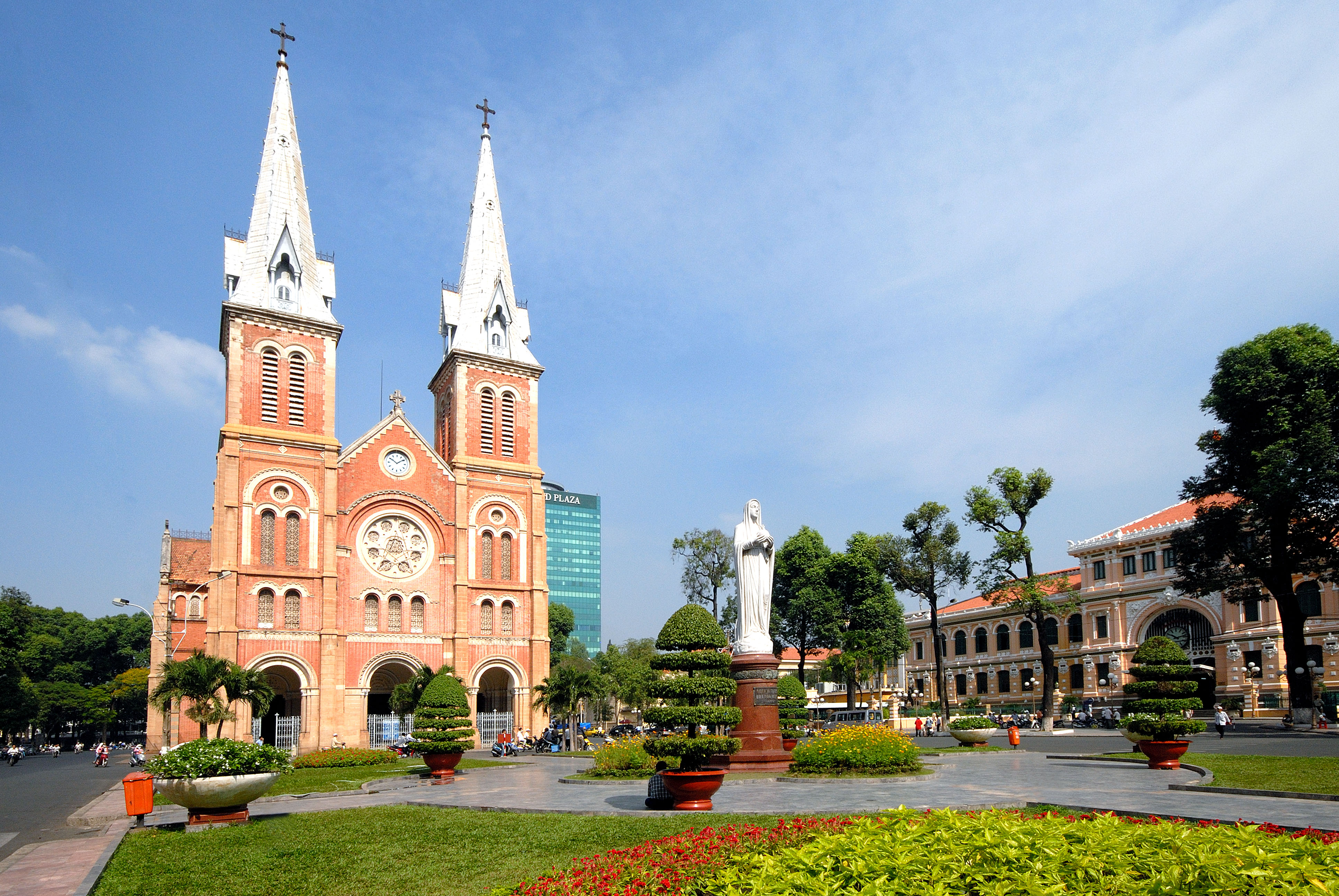
Saigon Notre Dame Cathedral
Around 7% of Vietnamese practice Roman Catholicism. It’s a minority religion that enjoyed privileged access to land and power during French colonial times - hence Notre Dame Cathedral’s position in the heart of this primarily Buddhist city. Built in 1880, it’s among the oldest remaining colonial era structures, and the country’s best known church. During colonial years, the spires were used as markers by ships sailing up the Saigon River.
Visiting time: from 8:00 to 11:00 and from 14:00 to 16:00. However since 2017, Saigon Notre Dame Cathedral is in the major renovation and not welcome visitors inside for safety reasons. Expected completion time is in 2027.
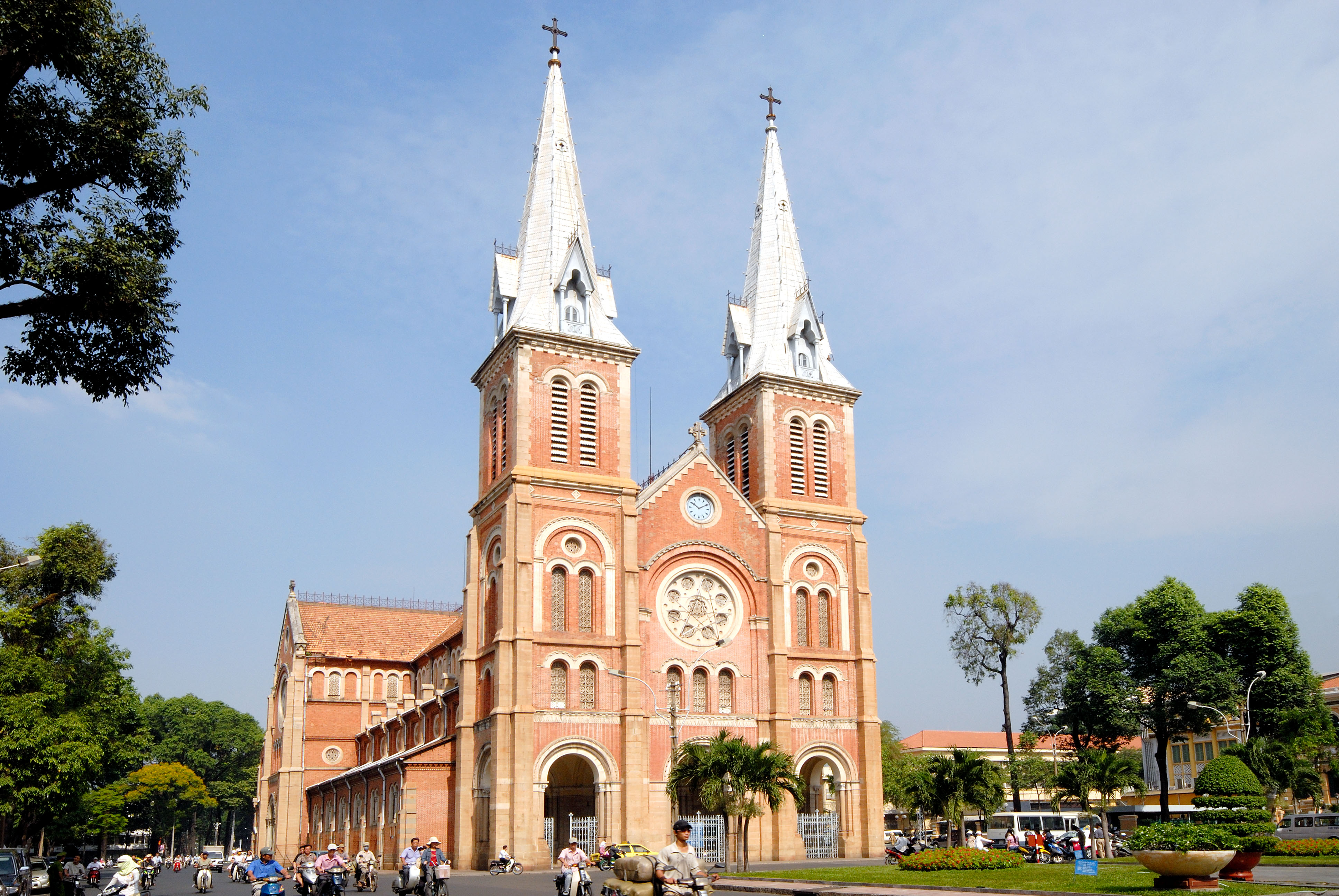
Saigon outskirts
Cần Giờ District

The Can Gio Mangrove Biosphere Reserve is located in the coastal district southeast of Ho Chi Minh City. The reserve provides opportunities to advance environmental protection across a continuum of habitats, ranging from coastal areas to the boundaries of Ho Chi Minh City, the biggest industrial city in Viet Nam. The mangrove forest hosts the highest diversity of mangrove plant species, mangrove-dwelling invertebrates and mangrove-associated fish and shellfish species in the sub-region, and is regarded as the ‘green lungs’ of the city.
Touring to Can Gio Forest Park, canoeing in the mangrove forest to visit the Rung Sac revolutionary base; monuments and learn about the lives, battles and achievements of commando soldiers during the war; admiring the natural herd of over 1,000 monkeys; canoeing on the river to Vam Sat eco-tourism area, rowing a boat to visit the turmeric bat reserve, fishing for crabs; visit the bird sanctuary, lilac crocodile, experience the feeling of adventure when going on a crocodile fishing boat; Conquer the 26 m high Tang Bong tower to see the whole mangrove forest.

On the other hand, having a seafood feast in Can Gio island is an eye-opening experience no one should miss out on. With a wide range of fresh nails and seafood on offer, you can take time to walk around the seafood market to have a look around before getting something.
Transportation: From the city center, in the direction of Tan Thuan bridge, and cross the river on Binh Khanh ferry. Visitors cantravel by motorbike, car or bus.
Historic Relics & Cu Chi Tunnel Complex

Ho Chi Minh City has a great deal of historical value related to the wars of resistance against the French and Americans to offer interest to tourists as well as locals. One of the most fascinating destinations is Củ Chi guerrilla warfare tunnels, located about 70km from downtown Ho Chi Minh City.
When people think of the most modern and crowded city in Vietnam, Ho Chi Minh City first comes to mind. But the city, the country's largest, also has a great deal of historical value related to the wars of resistance against the French and Americans to offer interest to tourists as well as locals.
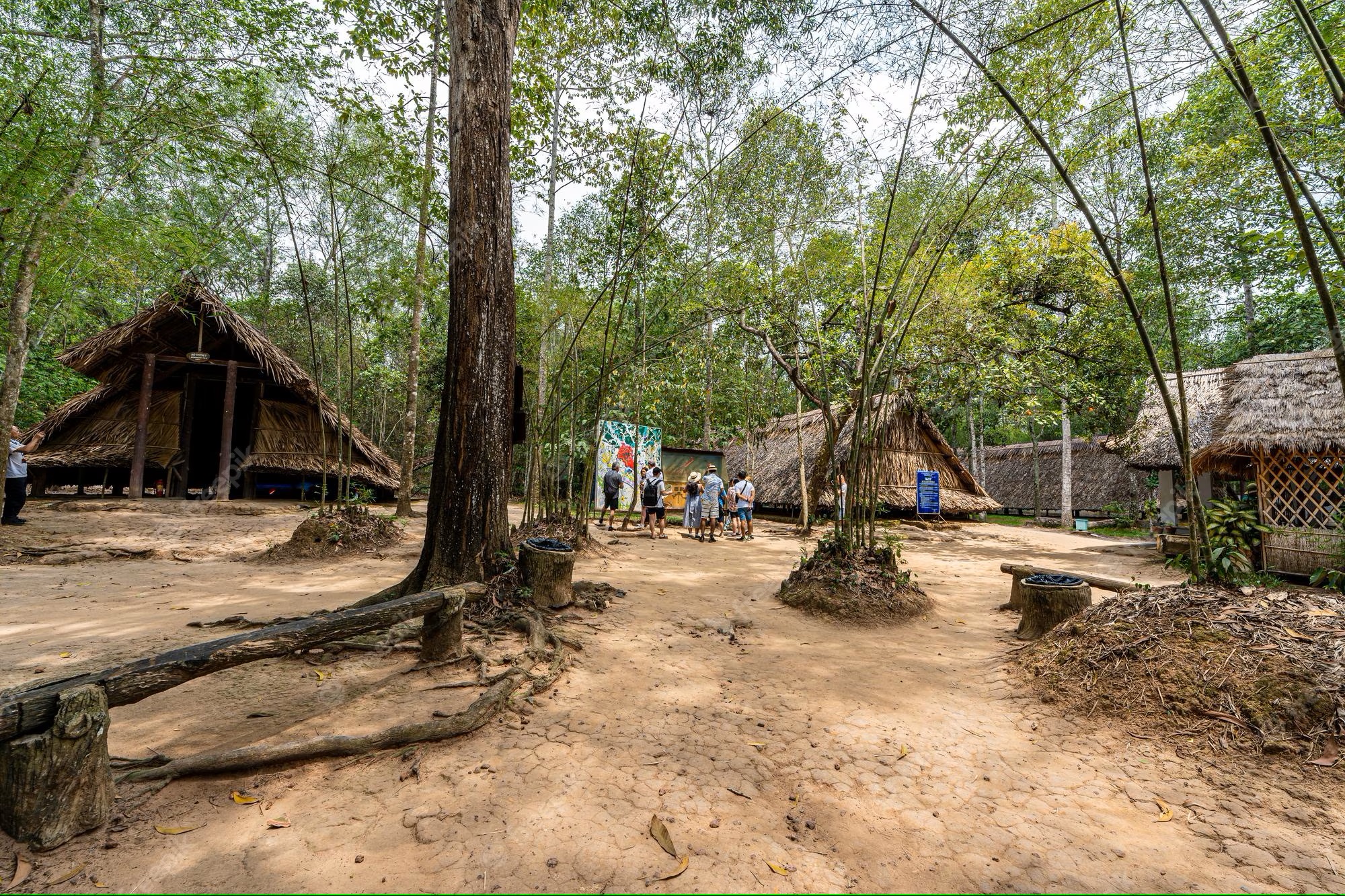
Saigon Markets
Ben Thanh Market

Ben Thanh Market is Saigon’s busy, central market, dating back to French colonial times. It’s a must for shoppers and curious visitors. You can buy everything imaginable from souvenirs to clothes, fabric and local handicrafts. For locals, Ben Thanh Market is a functioning vegetable and wet market - also worth a look. Saigon’s shopping is moving on from local markets. Takashimaya shopping mall is the largest and most modern downtown. As you wander the city streets, look out for the small boutiques scattered around the city centre, where local designers showcase their work. They might be hidden in buildings like 42 Nguyen Hue or the Catinat Building at the corner of Dong Khoi and Ly Tu Trong St.
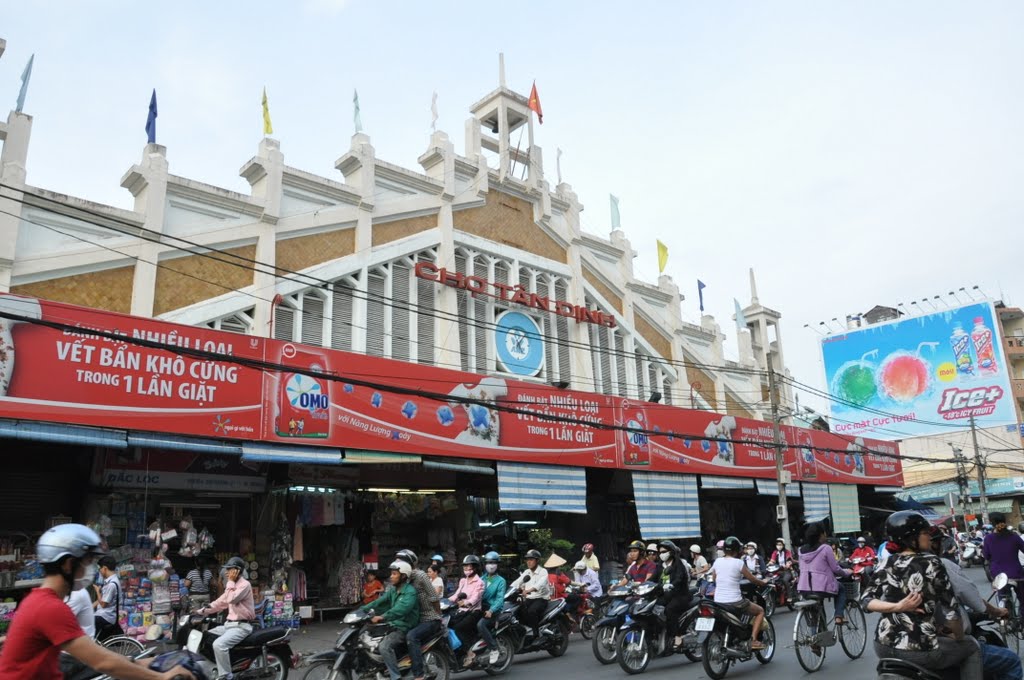
Tan Dinh Market
Built by the French colonial government in 1926, Tan Dinh market serves as one of the city’s historical monuments as well as a well-known shopping location for both locals and newcomers. Since it is located right at the corner of the Hai Ba Trung – Nguyen Huu Cau crossroads, it has four gateways. After nearly 100 years of existence, Tan Dinh market has remained as a prominent commercial center of Saigon’s downtown area which houses a food court and thousands of stalls selling groceries, clothing, footwear, fruits, textiles, and everything in between.
Cho Lon - Binh Tay Market

Binh Tay Market, located in Ho Chi Minh City’s Chinatown (Cho Lon), has a fascinating history that traces back to the late 19th century. The market was constructed by the French colonial administration to replace the older and smaller Cho Lon Market, which was destroyed in a fire. Binh Tay Market quickly became a thriving commercial center, serving as a vital trading hub for Chinese merchants and the local Vietnamese population.
Over the years, the market has witnessed significant transformations and endured the challenges of time, including damage during the Vietnam War. However, it was rebuilt and continues to thrive today, attracting both locals and tourists alike. Binh Tay Market remains an essential part of the city’s cultural heritage, offering a diverse array of products.
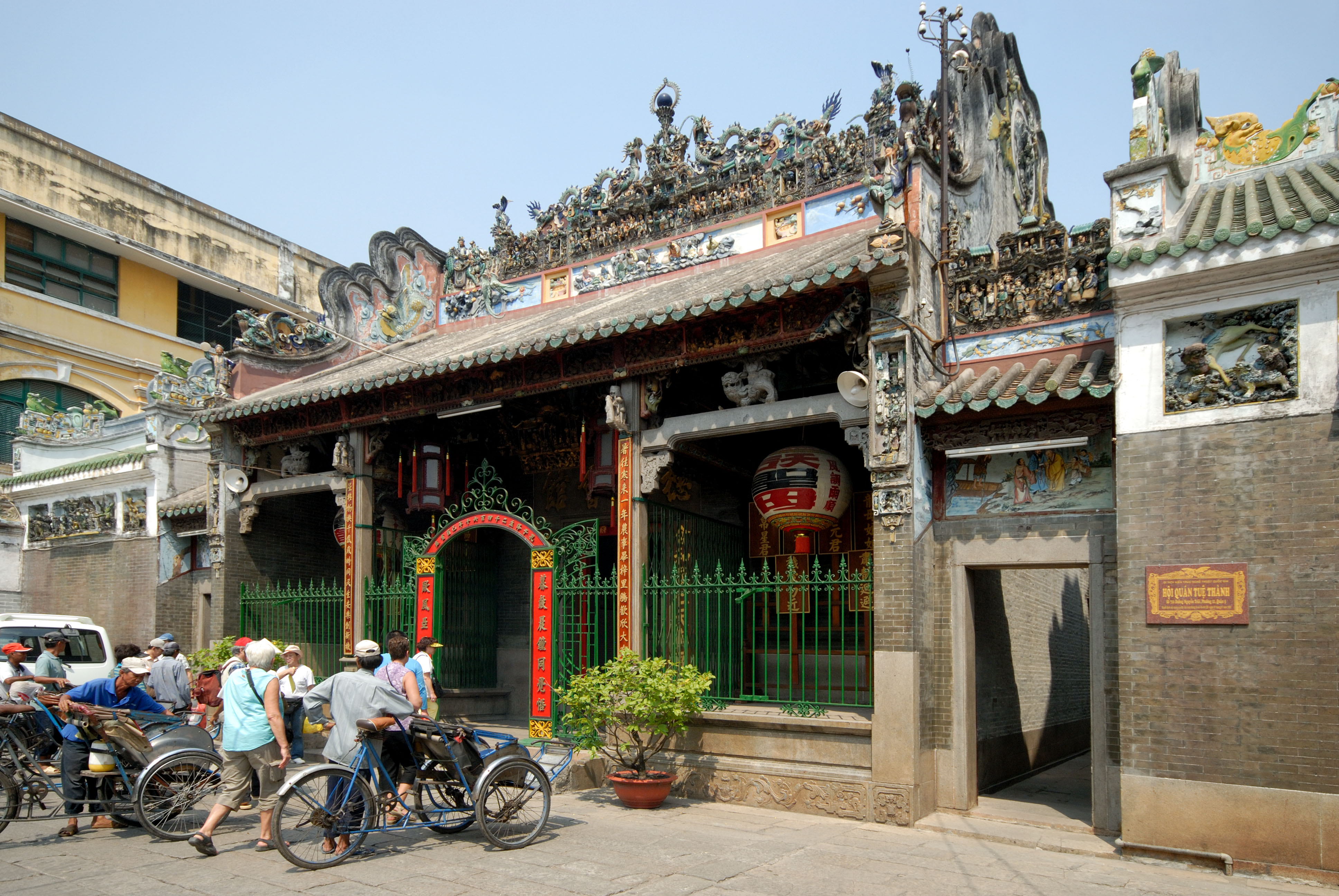
Saigon Cuisine
Ho Chi Minh City is the convergence of cuisines of many regions and countries. Visitors can find dishes along the three regions, there are also typical Chinese dishes, Indian, Japanese, Korean, Thai... or vegetarian dishes at countless restaurants large and small in the city. Typical dishes visitors should try include: broken rice, noodles, bread, grilled snakehead fish, pancakes, braised burnt rice.

The following food streets are suggestions for first-timers to Ho Chi Minh City.
Phan Xích Long Street
Phan Xich Long Street, Phu Nhuan District is home to many famous restaurants, eateries, and culinary brands. Here, visitors can find hot pot, barbecue, European restaurant, Japanese, Thai, Korean restaurant, Vietnamese restaurant. 13 streets named after flowers surrounding Phan Xich Long street such as Hoa Phuong, Hoa Lan, Hoa Hue, Hoa Mai also have many cafes and rooftop bars, open until midnight.
Vĩnh Khánh the Street of Snails


Snail dishes are a specialty of Ho Chi Minh City. Anywhere in the city, you can find snails, in which along Vinh Khanh street, District 4, there are many famous snails and seafood restaurants in the city. The shops are usually open until midnight, crowded with customers. Snail dishes cost from 80,000 to 150,000 VND depending on the type of snail. Unlike Hanoi snails, which often have a typical cooking style, which is steamed with lemongrass, dipped with chili fish sauce, snails in Ho Chi Minh City are processed in a variety of ways from salted egg sauce, to stir-fried tamarind, grilled with salt and pepper, and fried with satay.
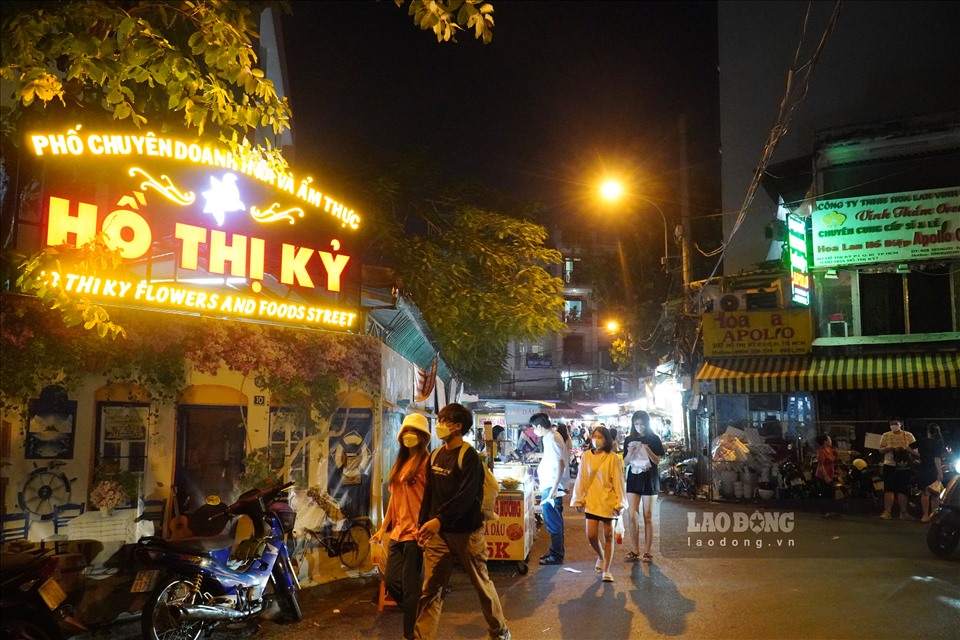
Ho Thi Ky Street Food Heaven
VNS—More than 100 food stalls flank two sides of a street section, serving an assortment of foods and beverages from various places like Huế, Nha Trang, Đồng Nai, and An Giang. All kinds of fruit and sweet soups and traditional cakes from the southern region can be found here for only VND 10,000 per bowl and VNN 30,000 for a platter of five. The area also has Cambodian foods like num banh chok (Cambodian rice noodle soup) and snail noodles. Some stalls serve international foods such as sushi, takoyaki from Japan, and kimbap and teokbokki from South Korea.
Nguyễn Thượng Hiền Street Food

Nguyen Thuong Hien Street Food (from Dien Bien Phu Street to Nguyen Dinh Chieu, District 3) operates from 19:00 to 23:00 every day. On the route, there are more than 90 food and beverage outlets and more than 50 shops selling clothes, shoes, and beauty products. The street is famous for dishes such as mixed rice paper, mixed bamboo, grapefruit juice. Some shops also serve Cambodian-style food.
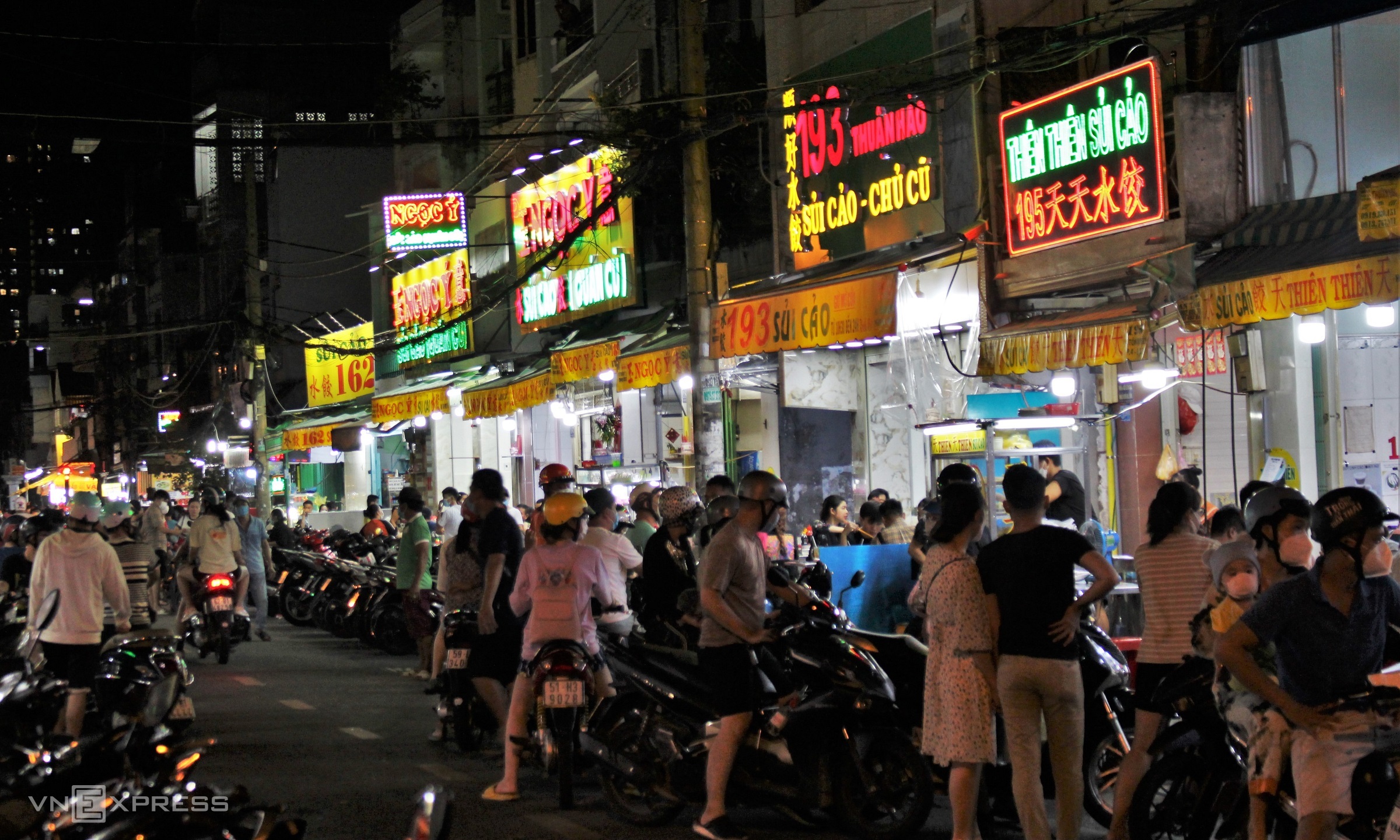
Ha Ton Quyen Dumpling Street
Diners would never regret visiting this 'shuijiao dumpling' street in Ho Chi Minh City. When Saigonese think of jiaozi dumplings, or sủi cảo, they frequently think of Ha Ton Quyen Street in District 11 where many restaurants run by Vietnamese of Chinese origin sell the dish every evening. Sủi cảo is one of the most popular Chinese dumpling dishes in Vietnam, found in many restaurants around the country and loved by young and old alike. Similar to other dumpling dishes, sủi cảo are squares of dough wrapped around a meat filling. While restaurants may prepare sủi cảo differently, the ones at Ha Ton Quyen Street usually batter the pork and fish to a paste for the meat filling, and add seasoning and fresh shrimp.
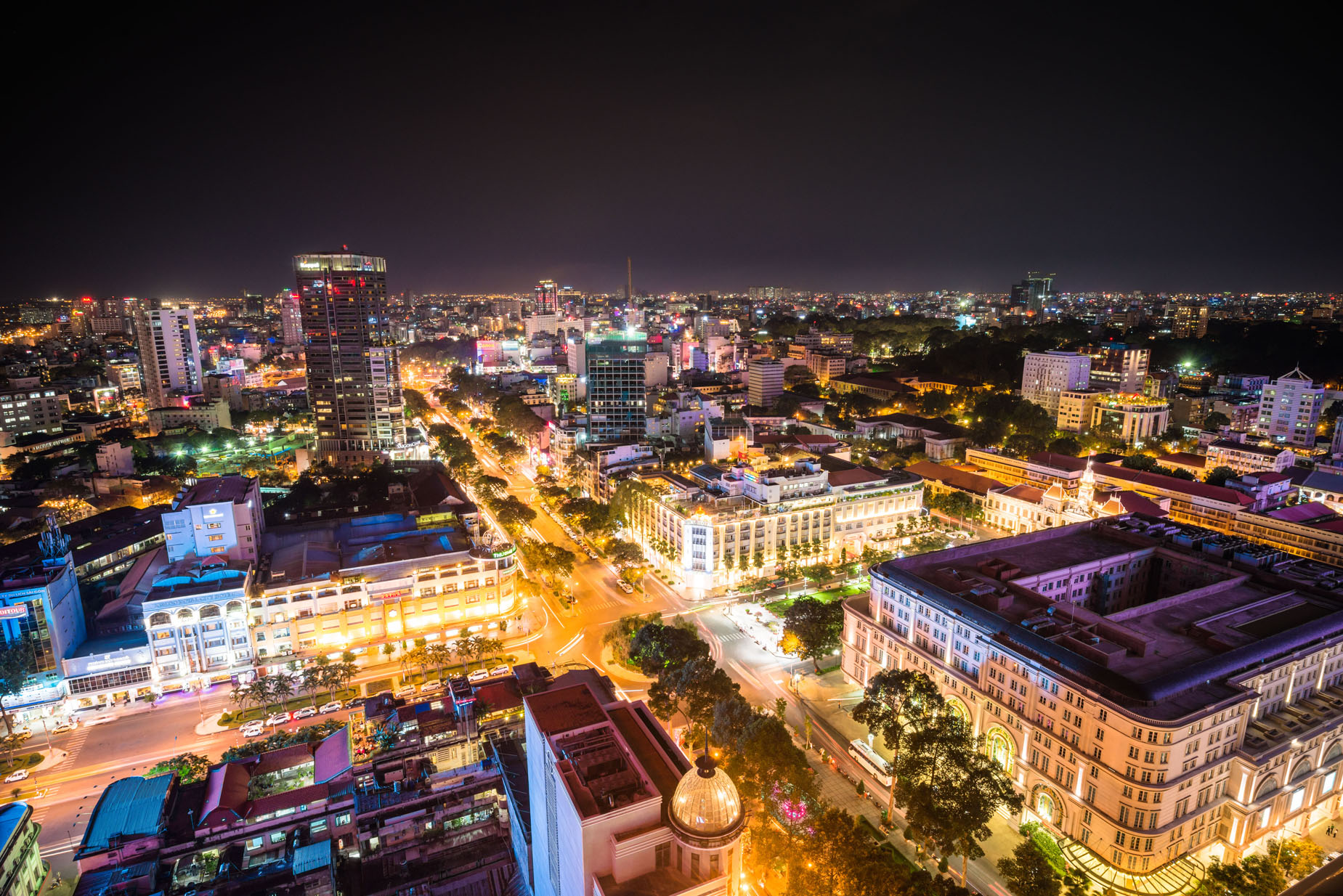
Travel Safety Notes::
Actively preserve personal belongings when going to crowded places and when traveling on the road. Visitors should avoid going to the street during peak hours, morning 8:00-9:30, afternoon 17:30-19:00 because it is easy to get traffic jams. You should check the road according to the map to avoid one-way roads and car lanes if traveling by motorbike, especially in the central area. Ho Chi Minh City has many interconnected alleys, visitors should not go into the alleys if they are not familiar with the road.
HCMC Tourism, Saigoneer, Vietnam Tourism and others
Thiên Xuân Travel — Live your travel dreams!
📨 booking@thienxuantravel.com
☎️ +84 888 890 898 — 0938 558 228
🔖 #thienxuantravel

